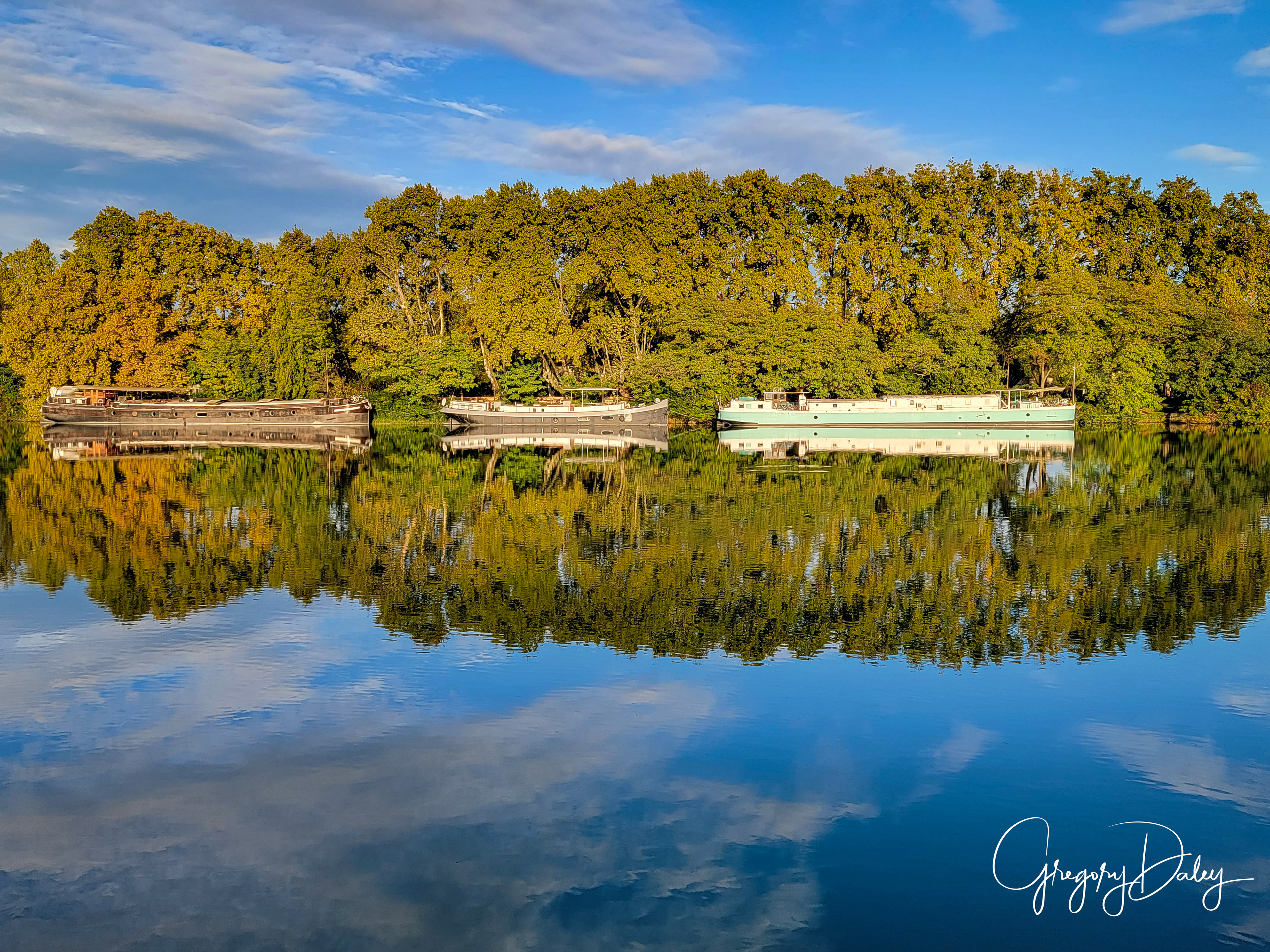
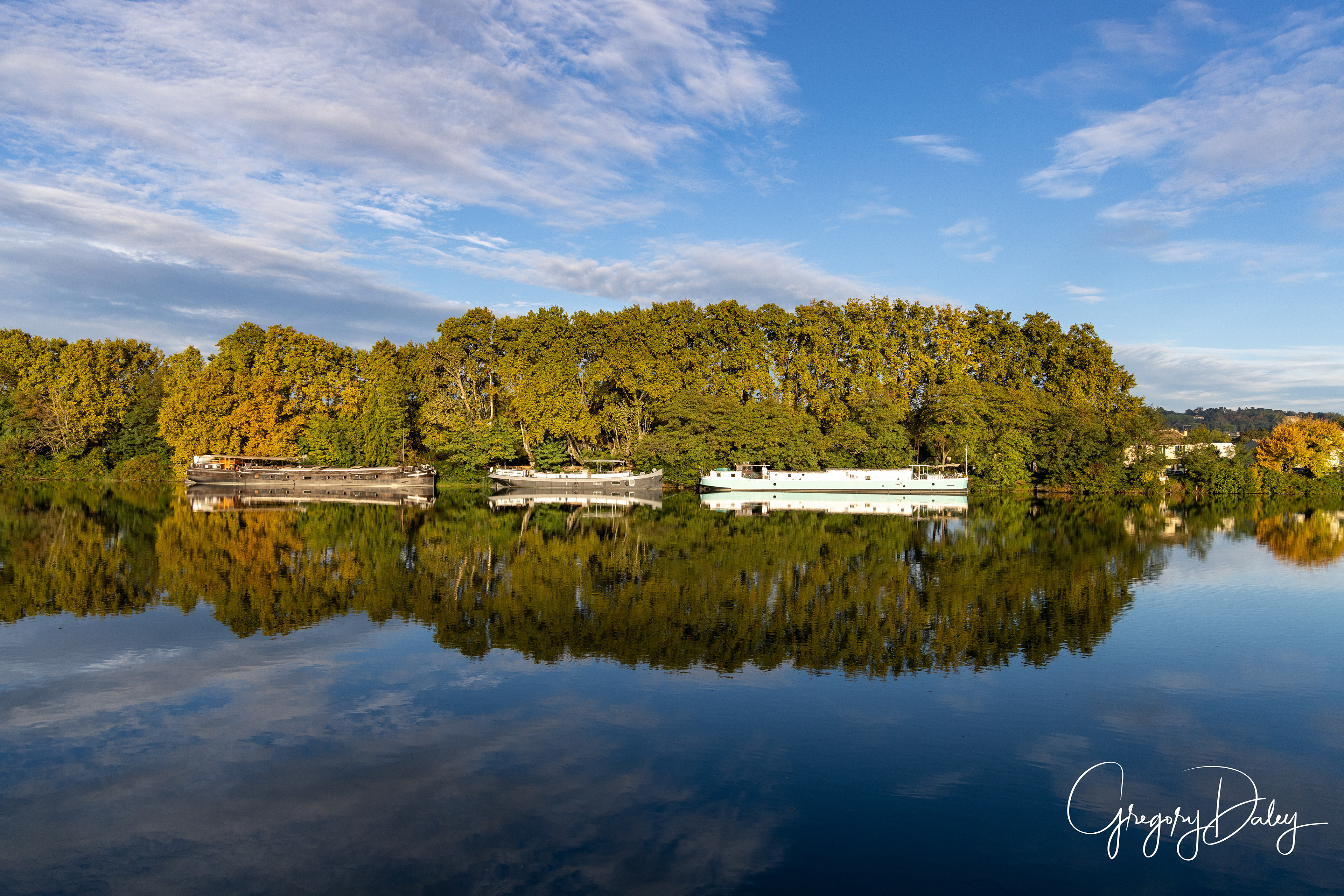
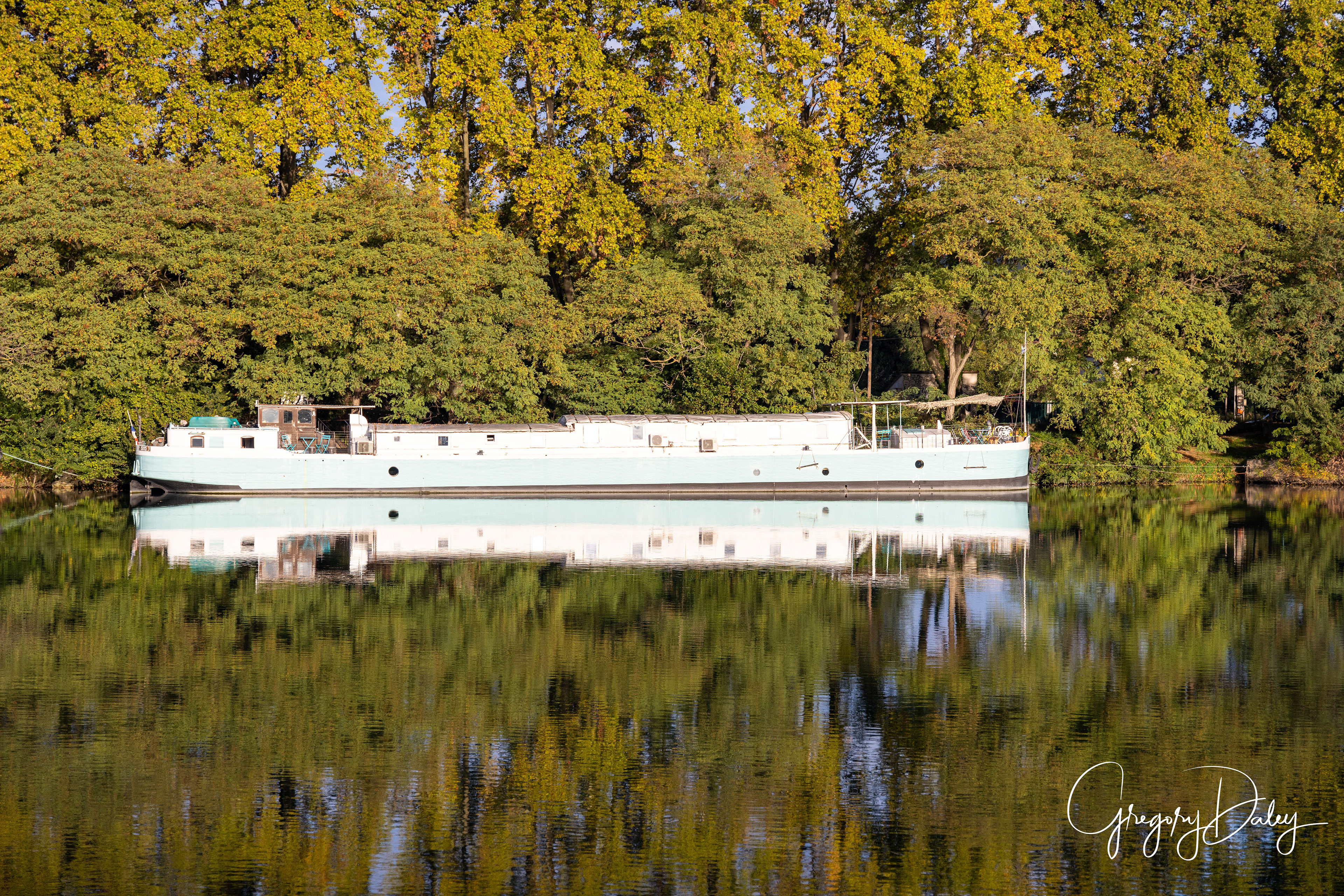
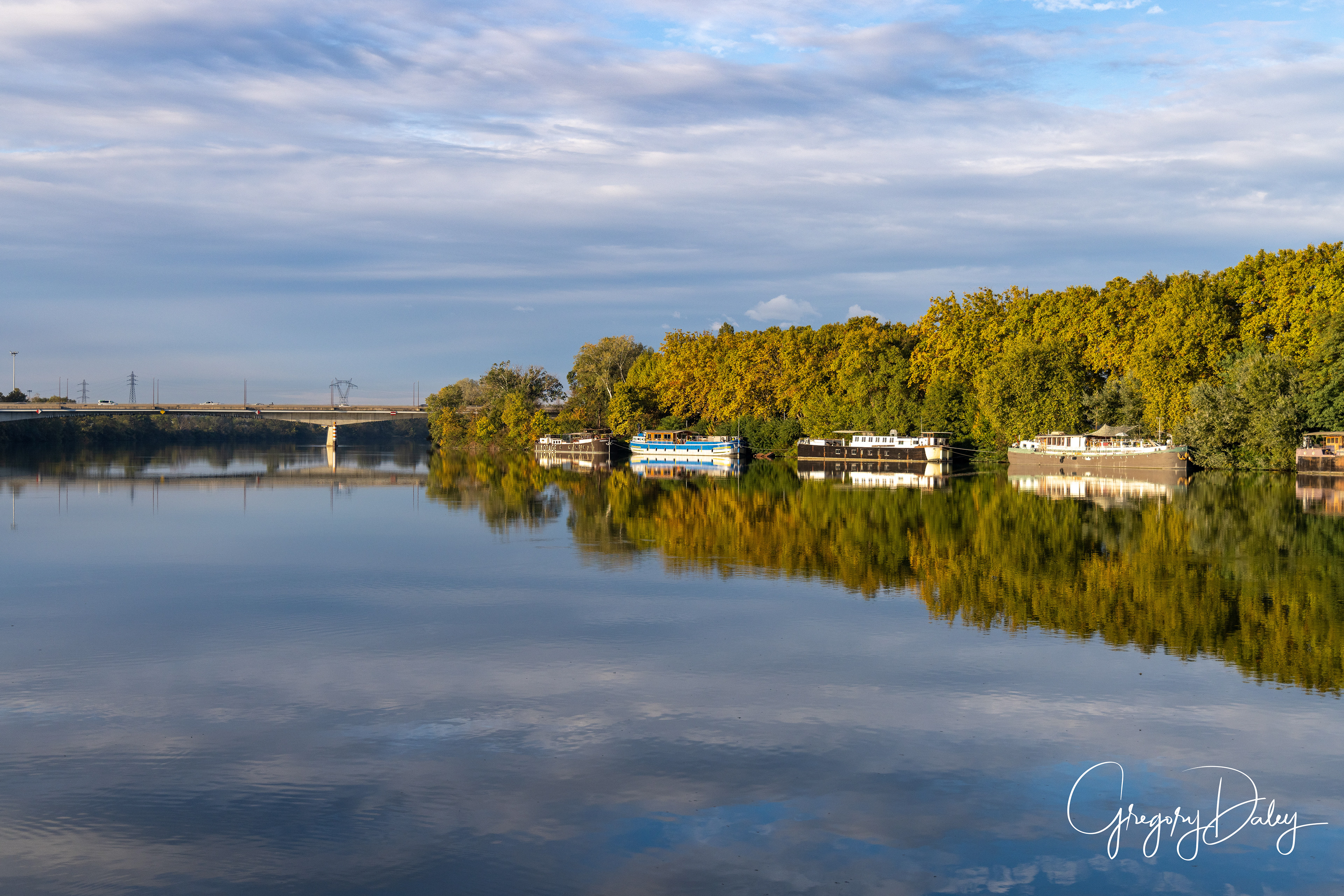
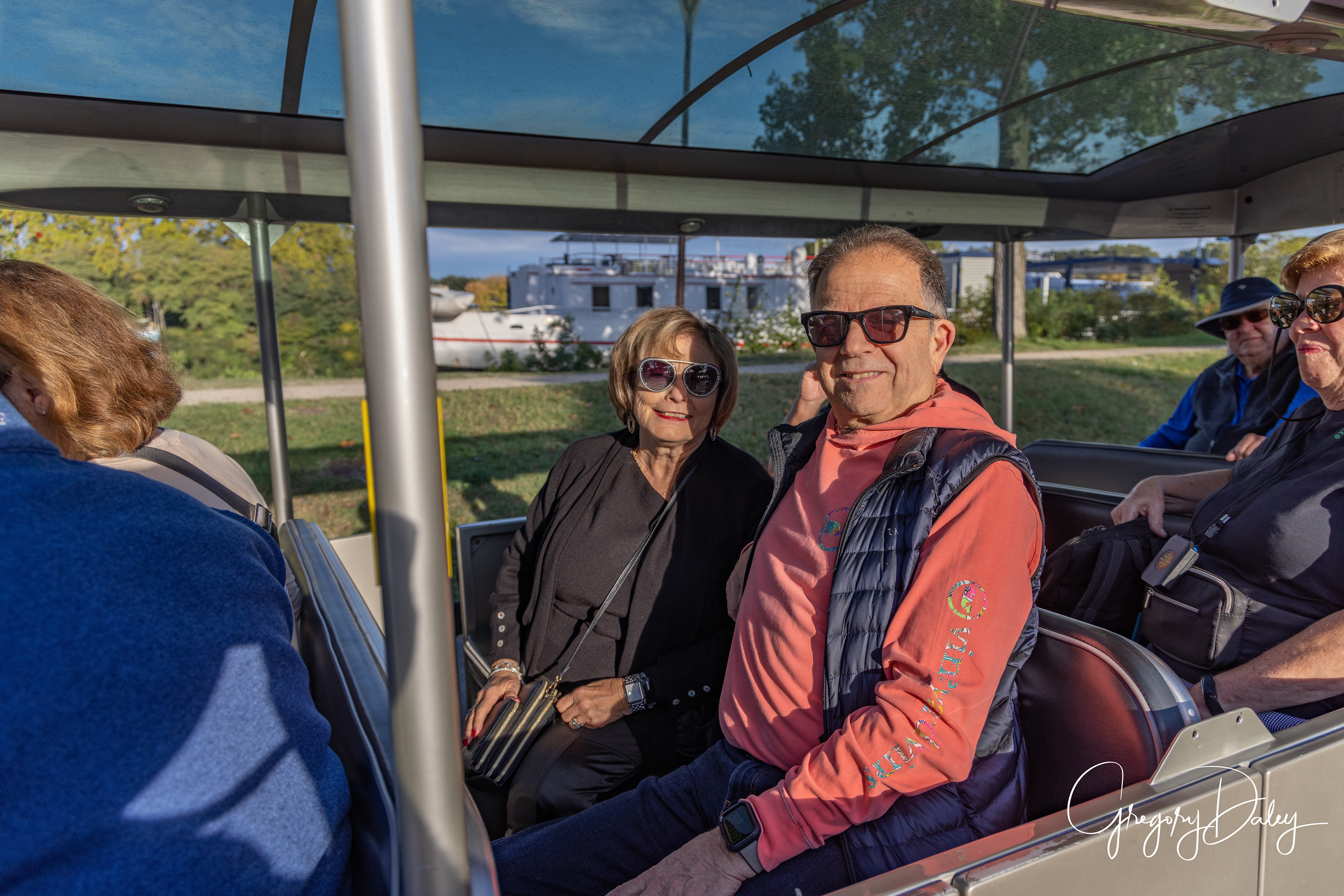
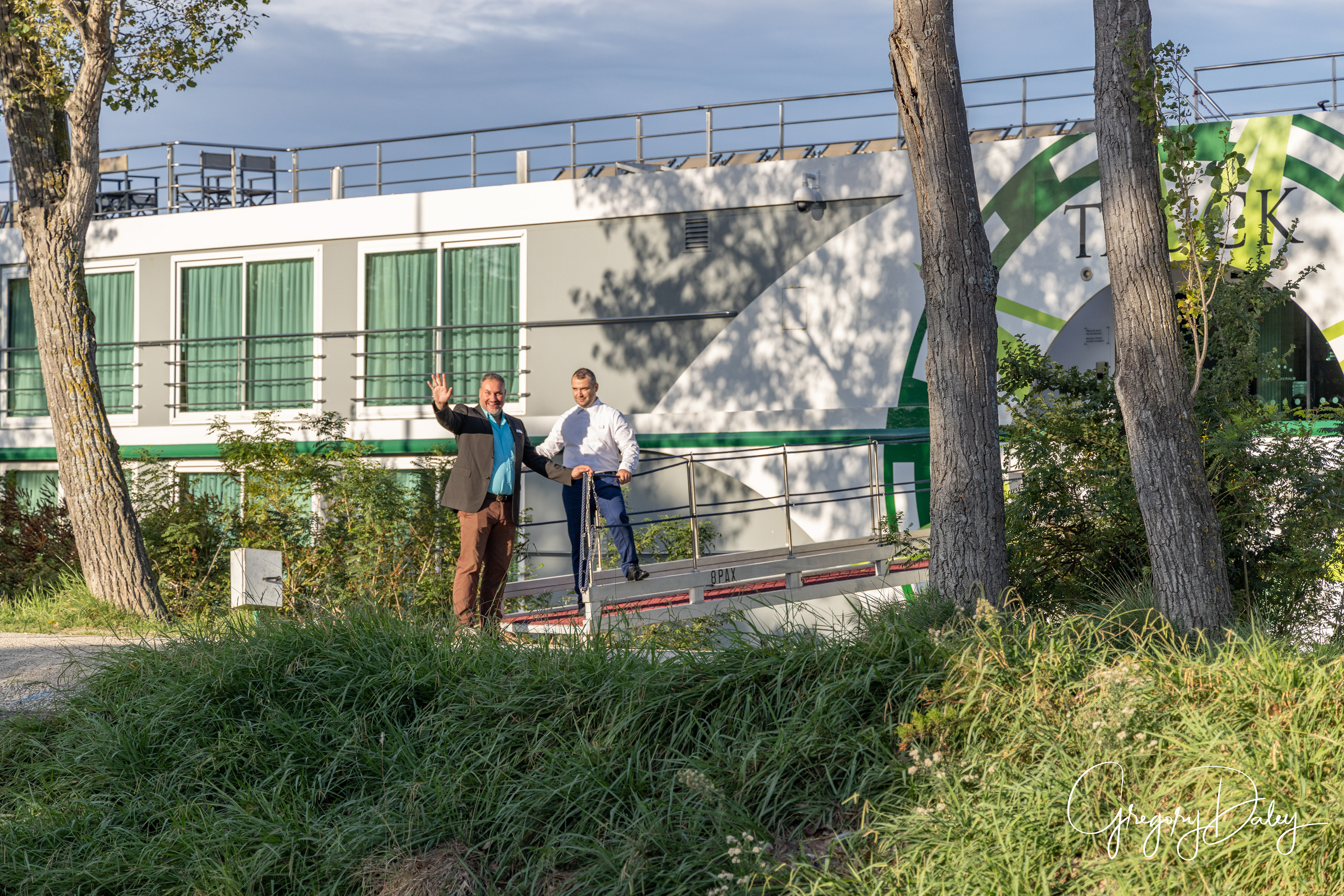
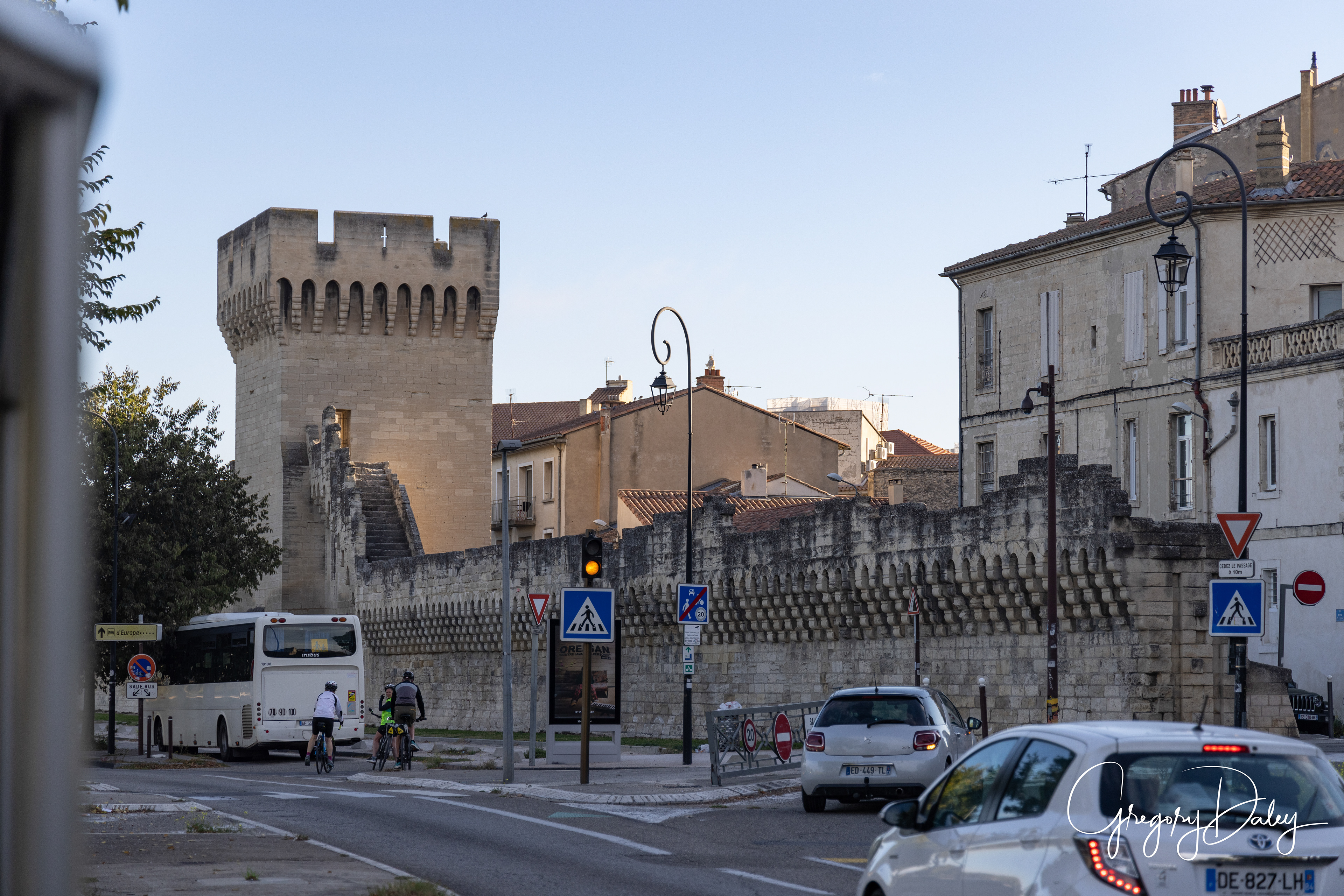

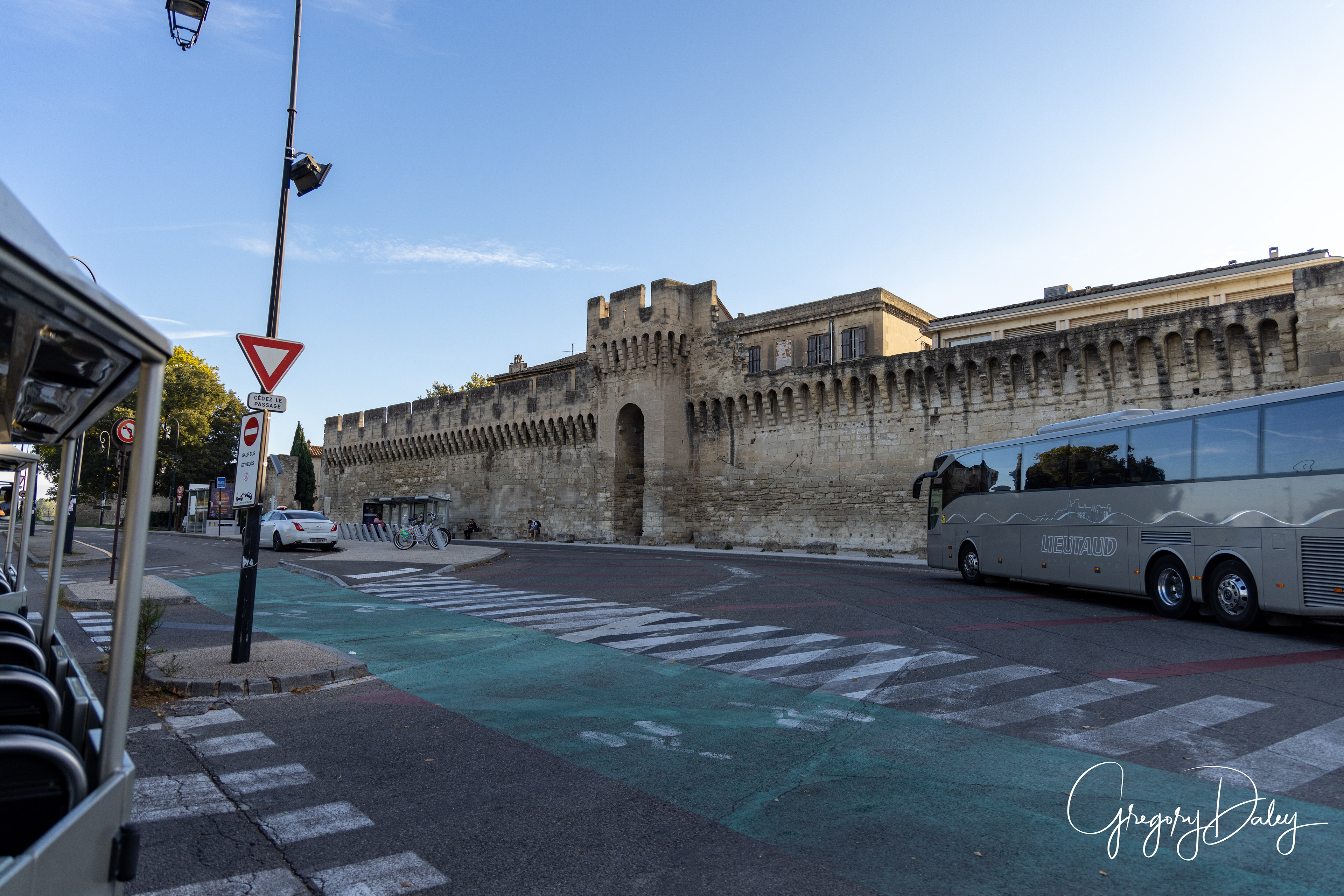

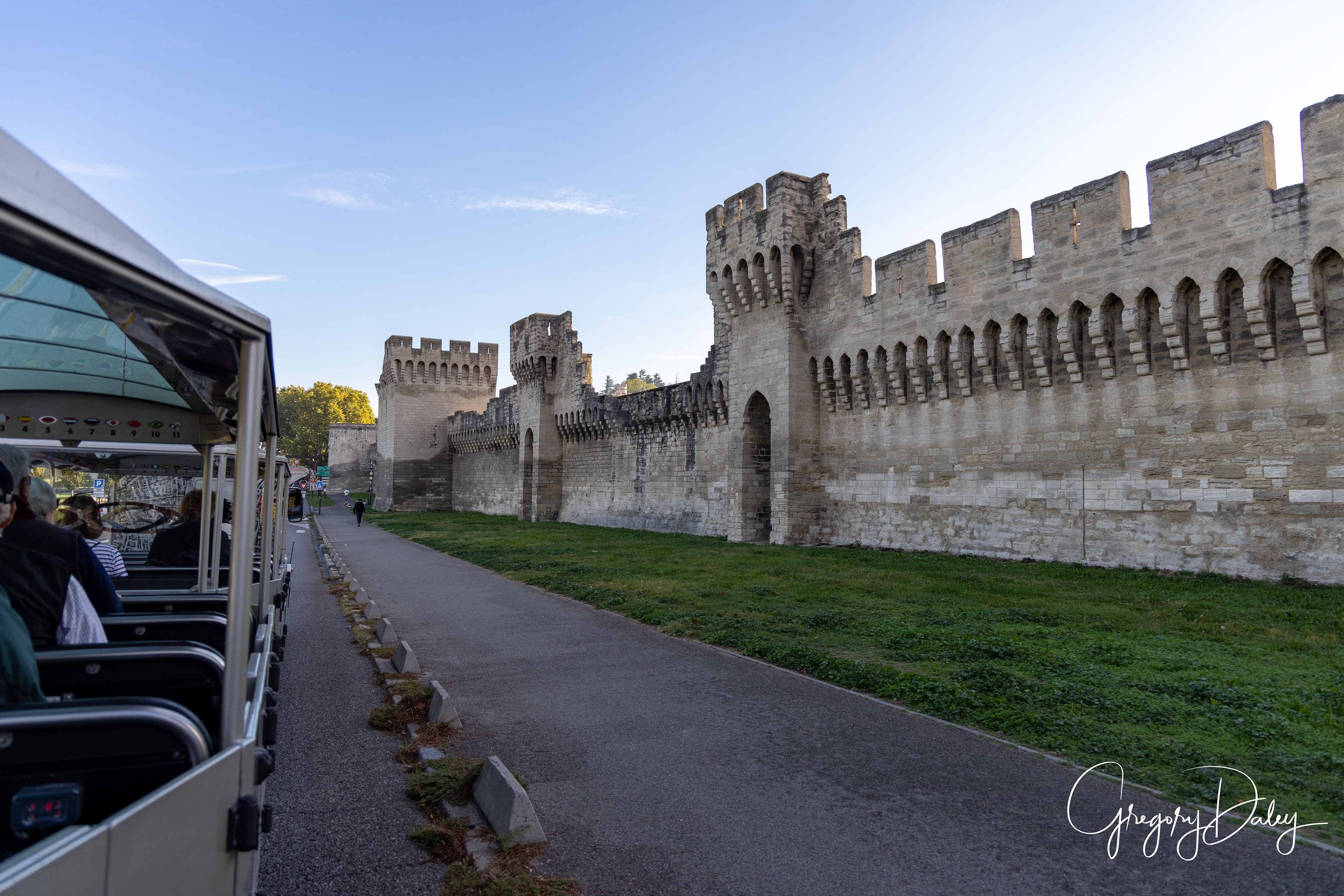


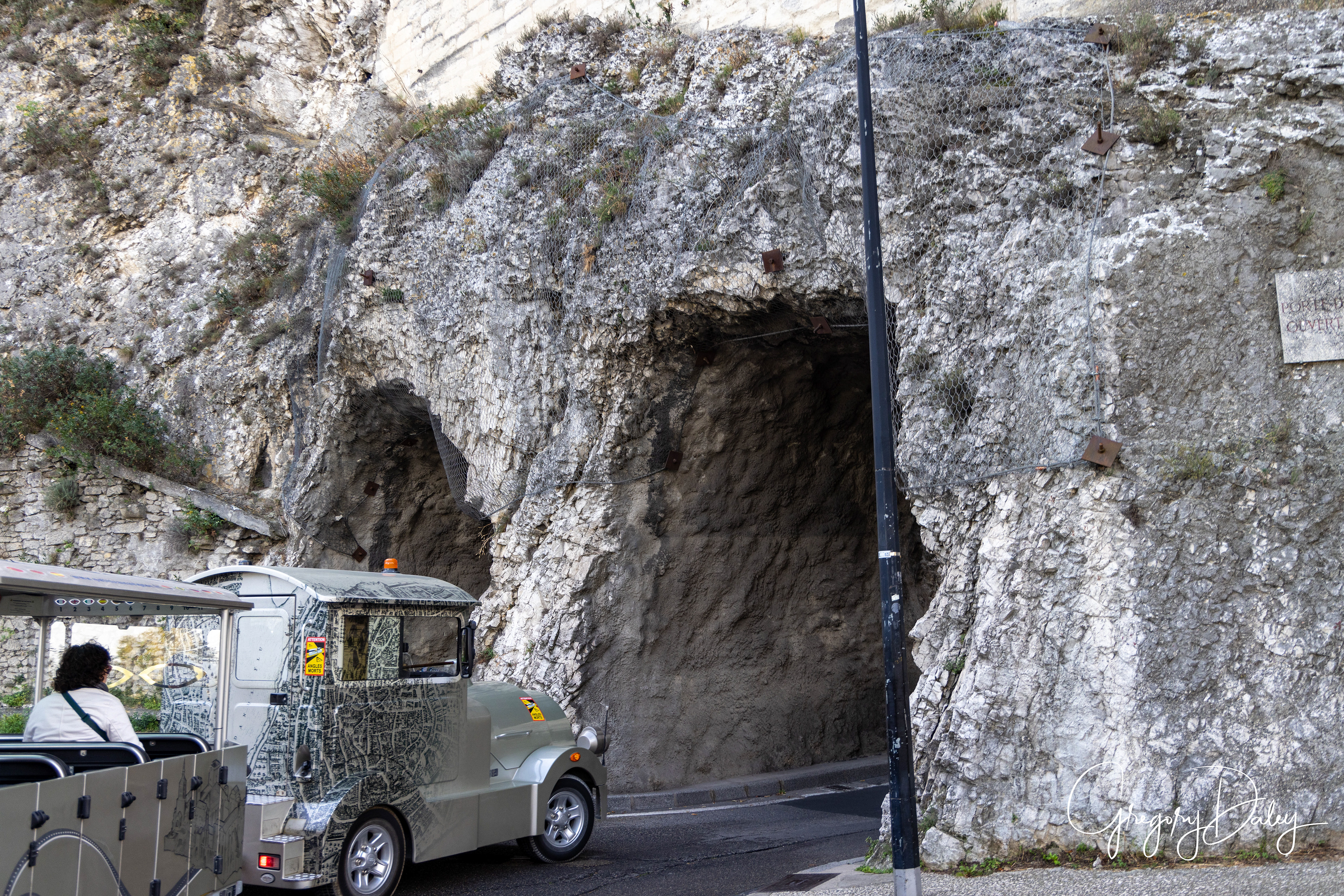
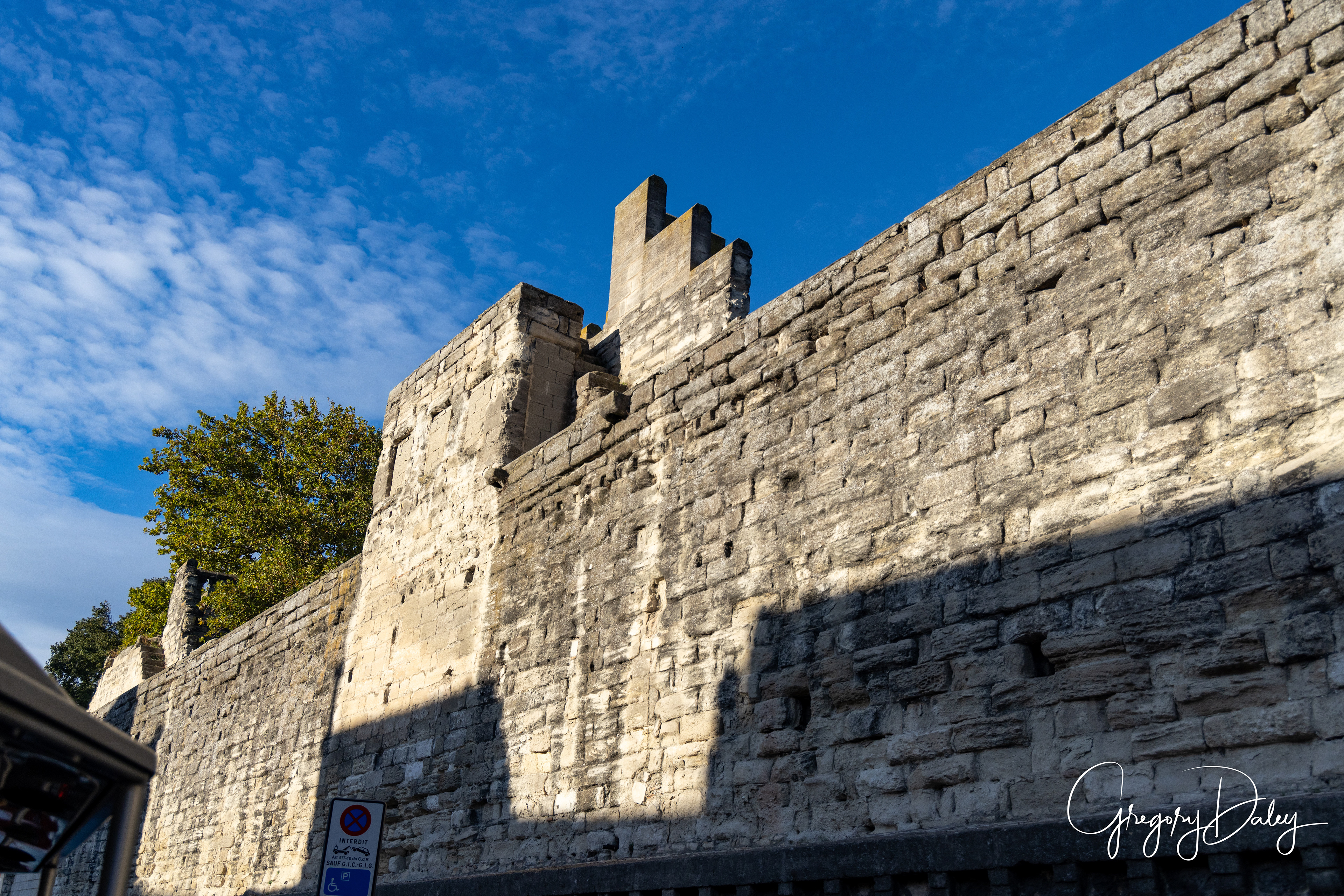
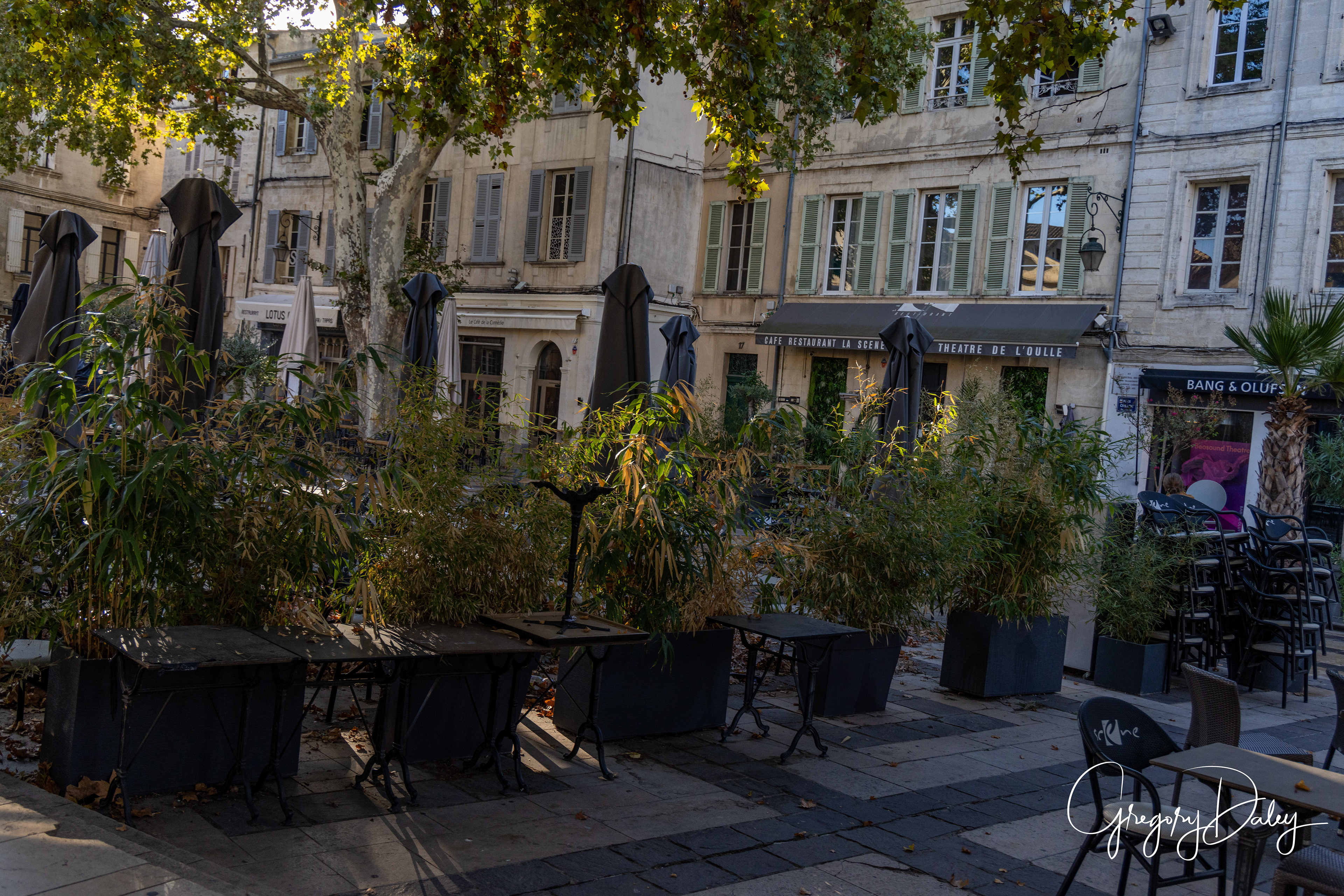
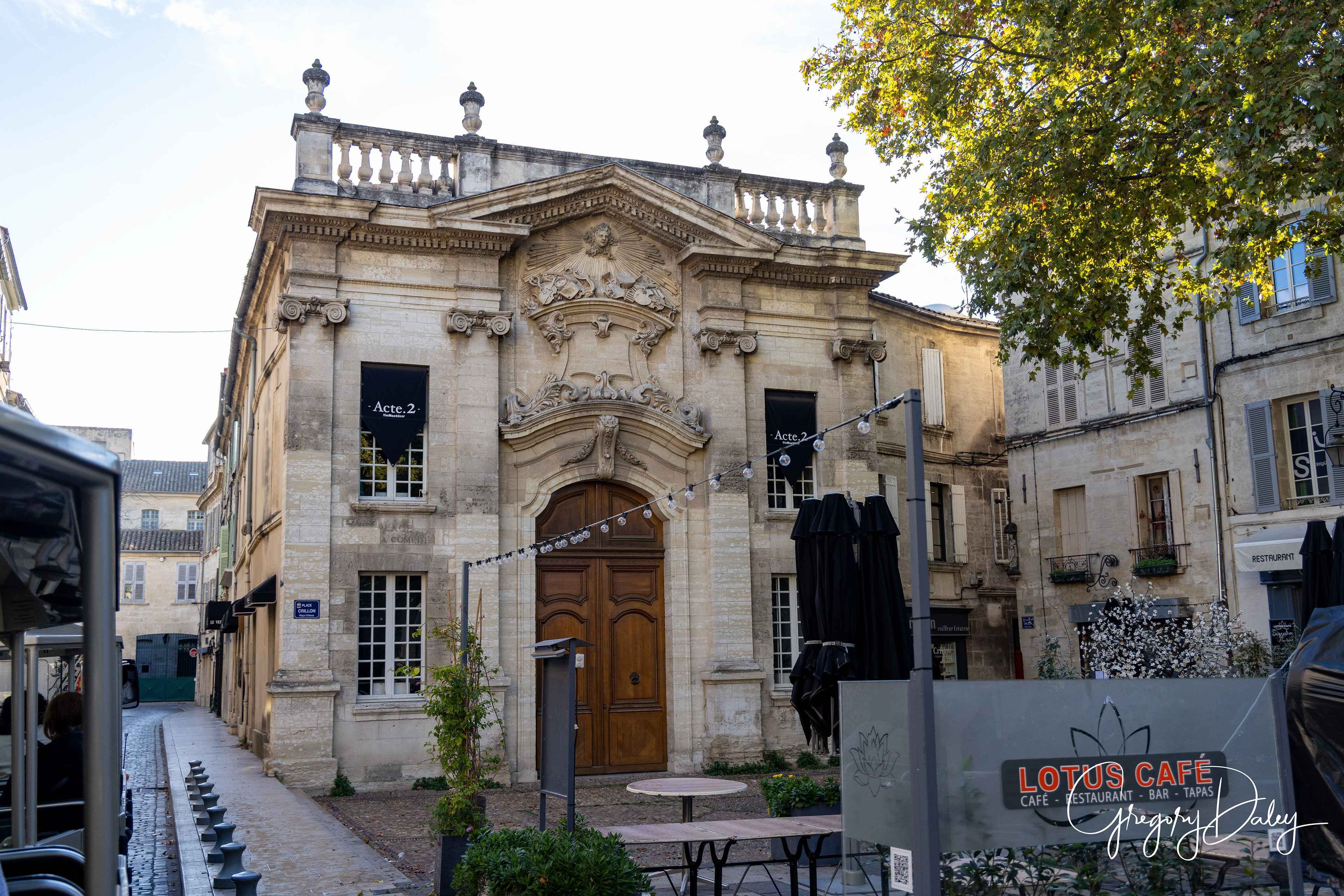
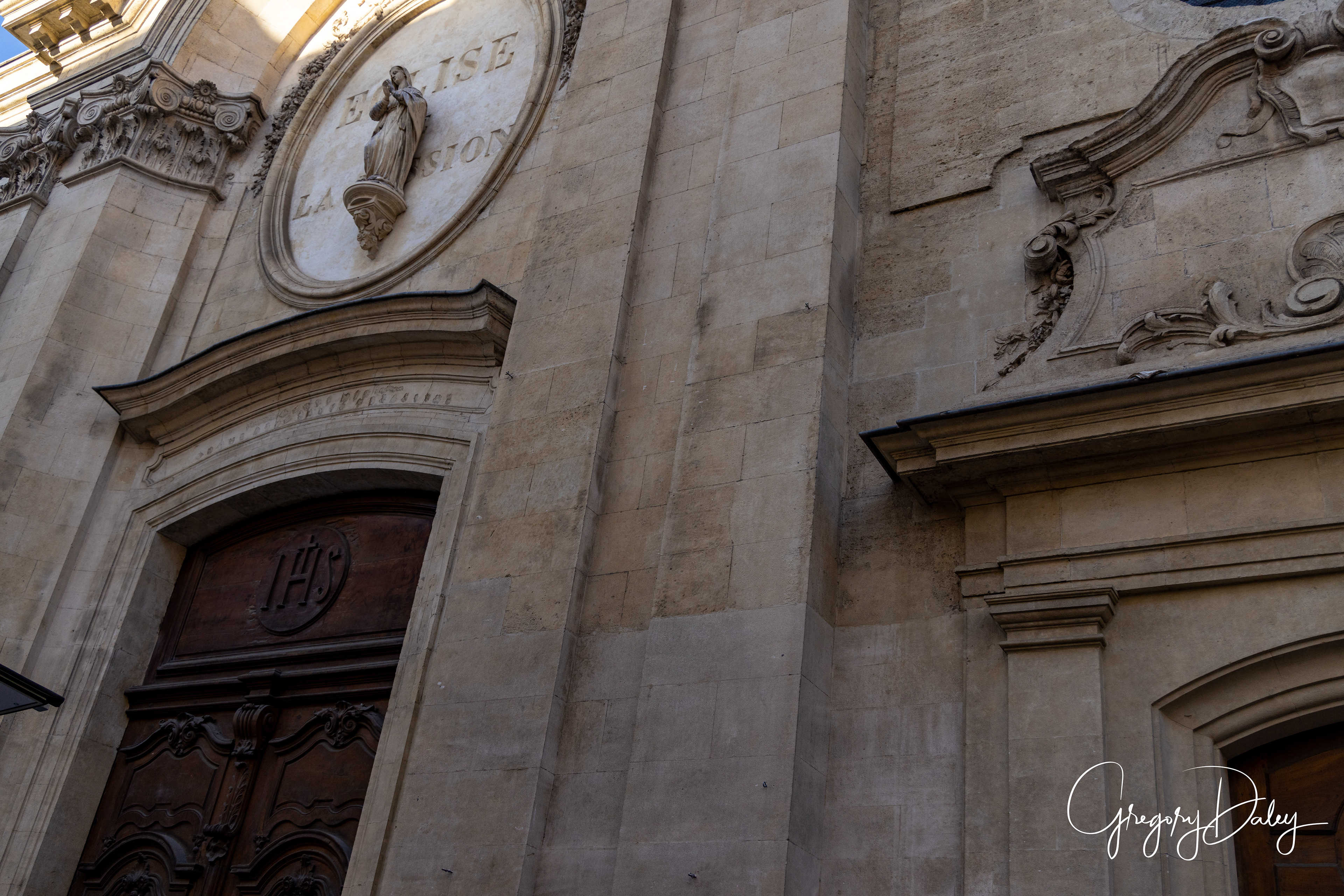
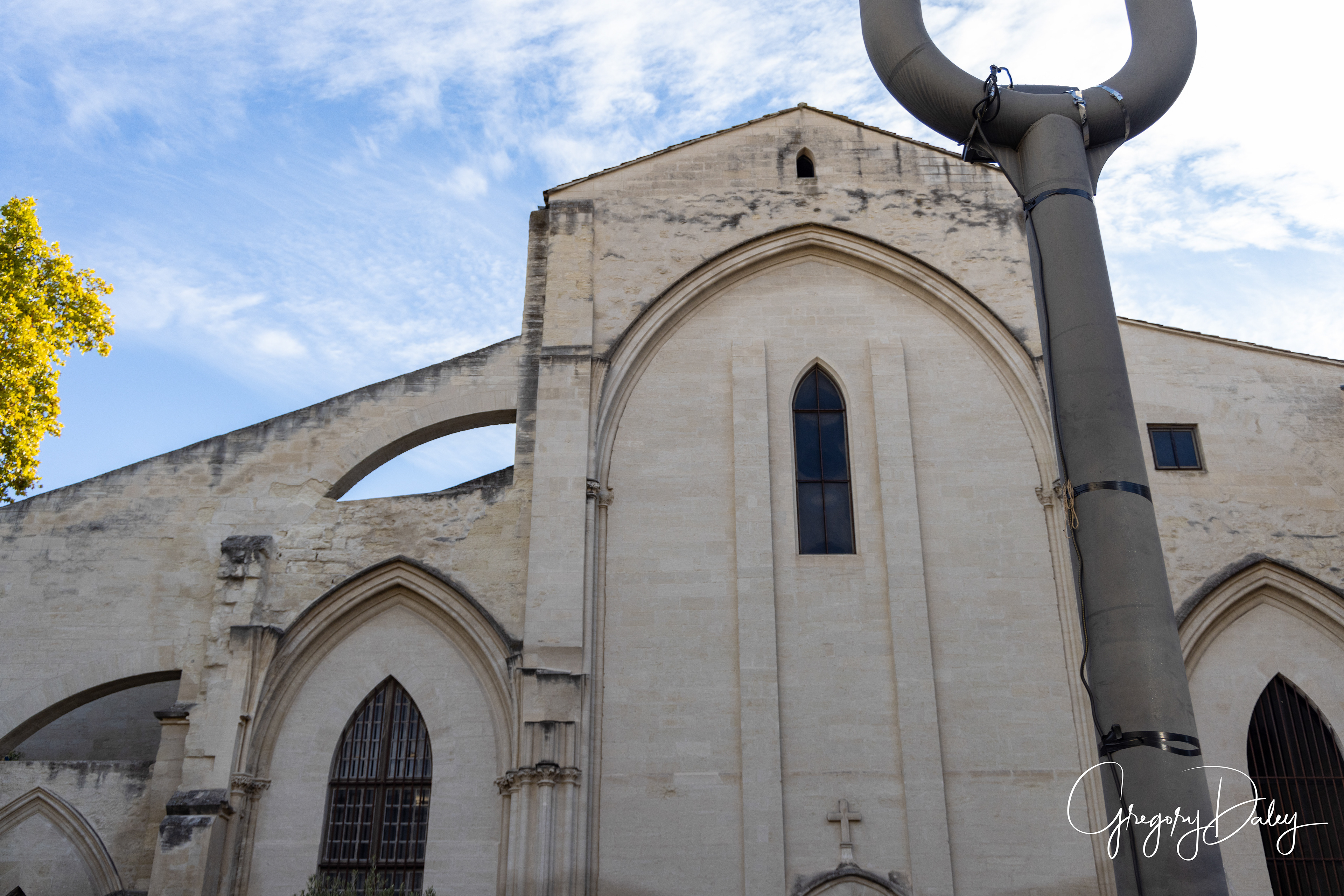
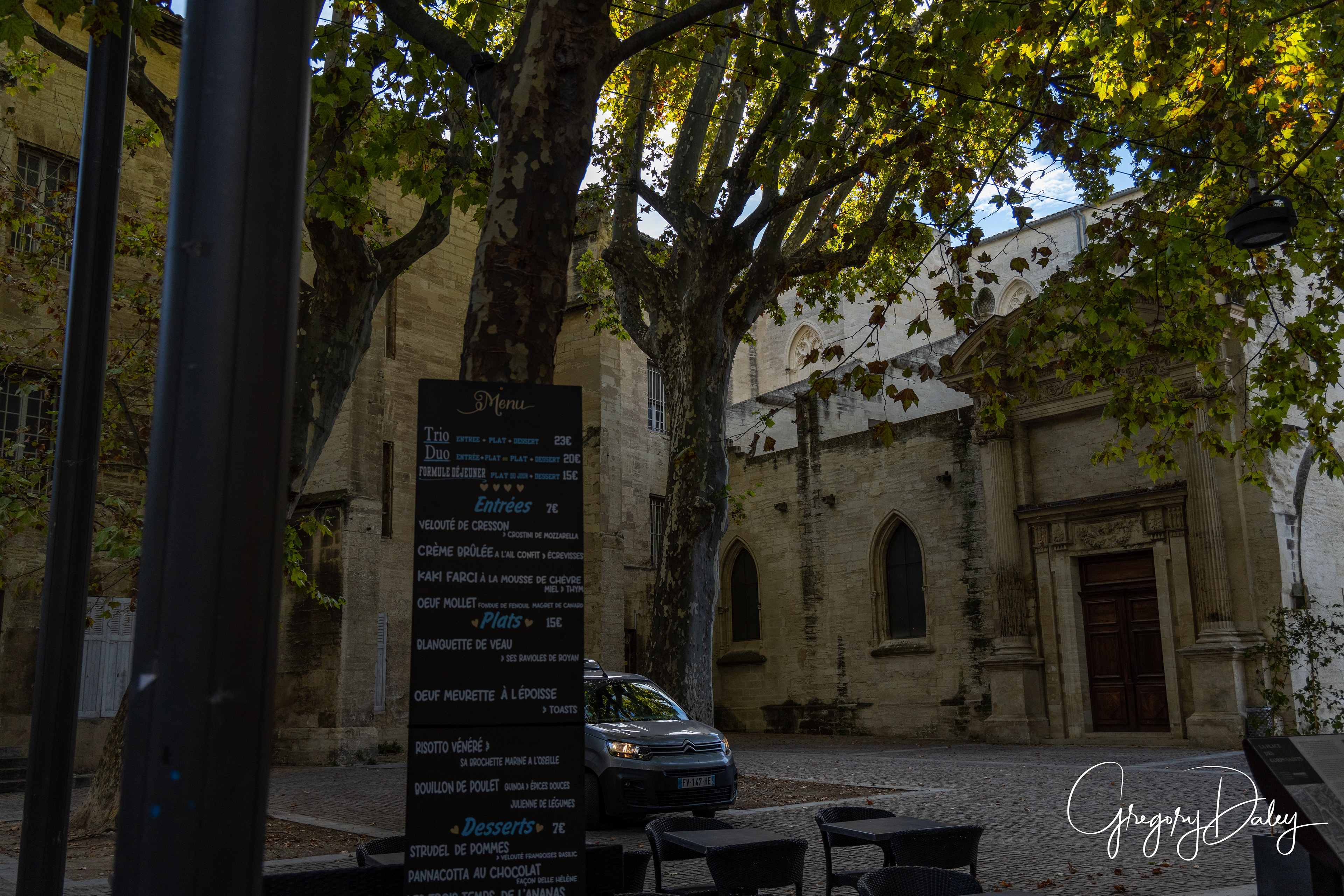
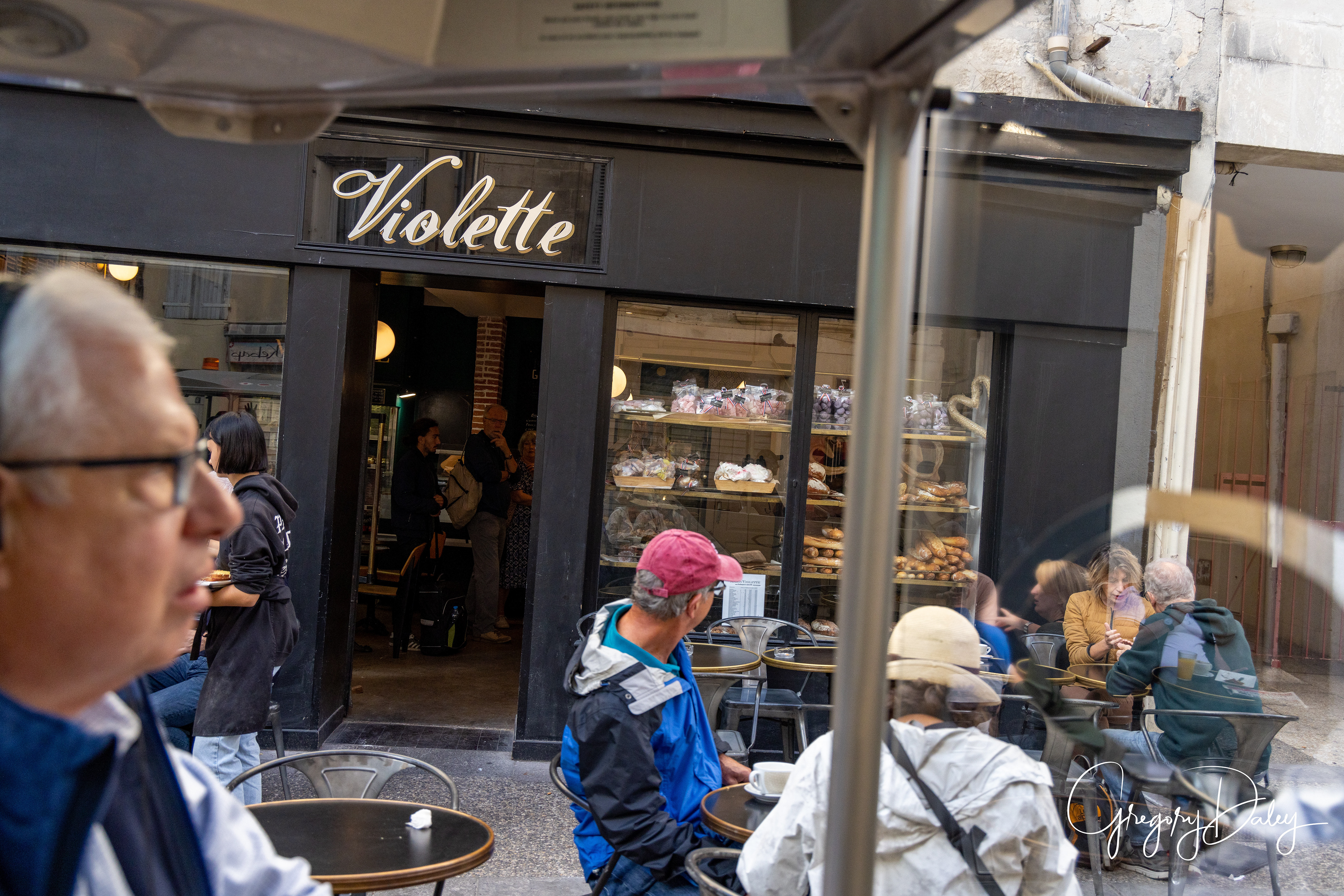
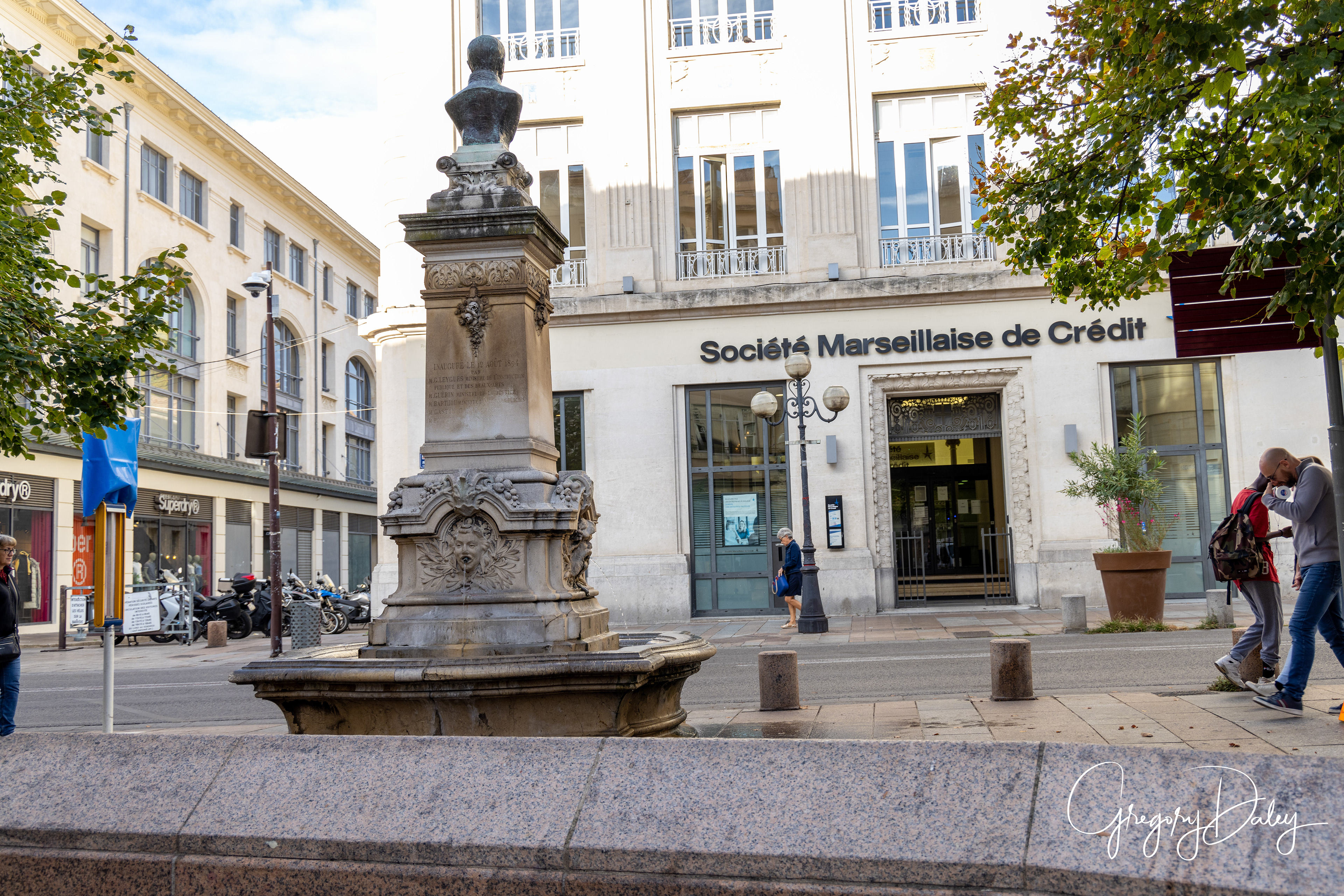
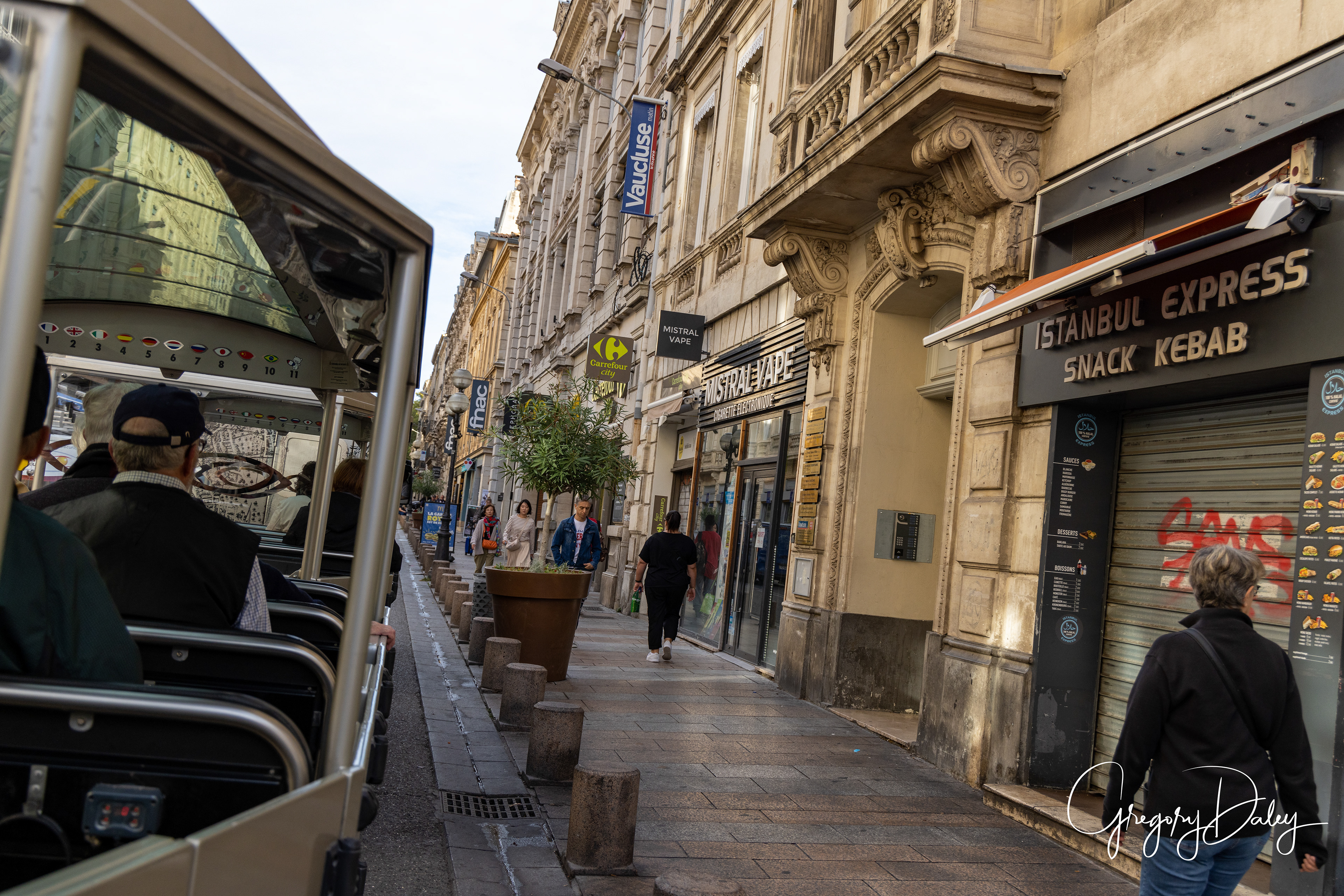
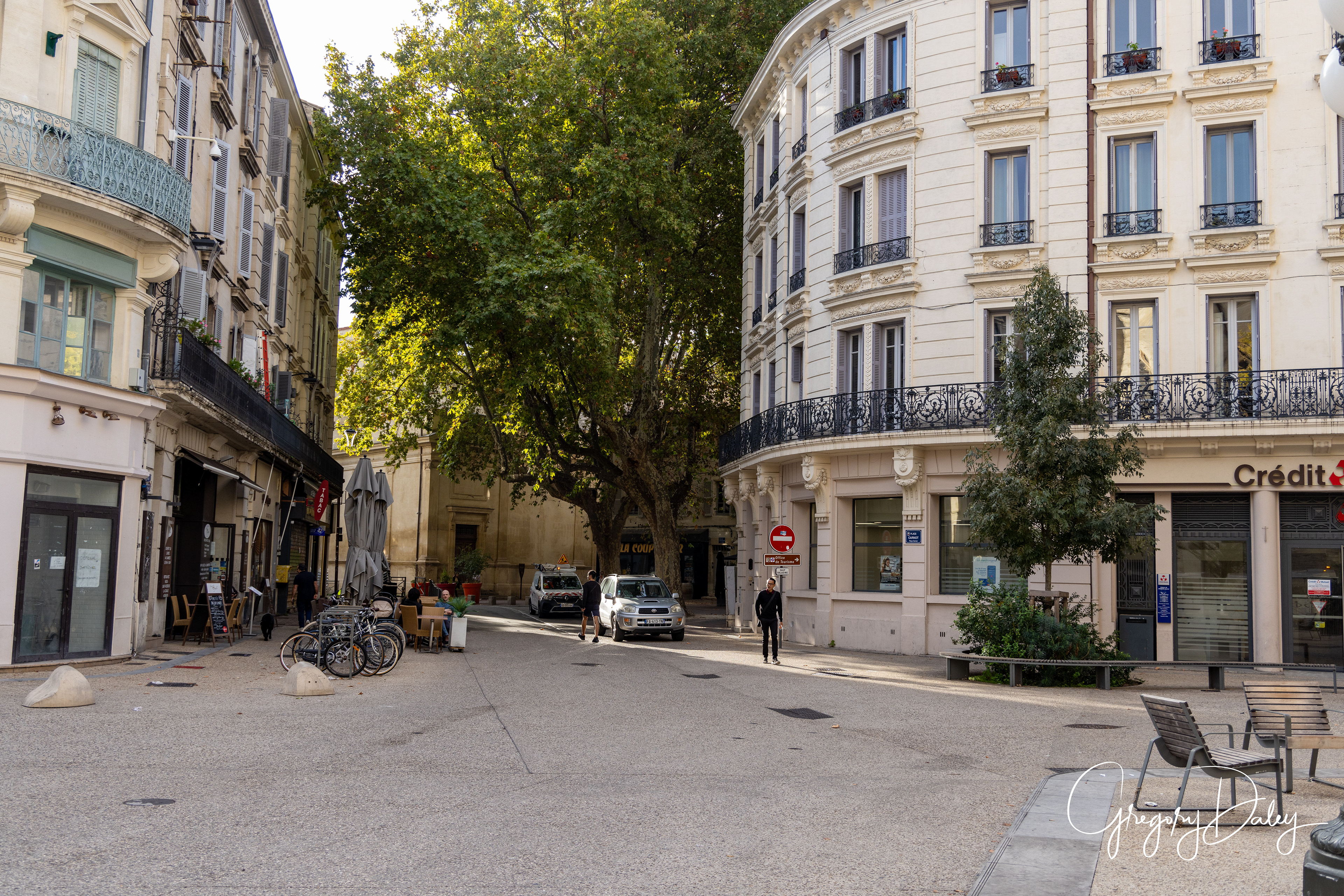

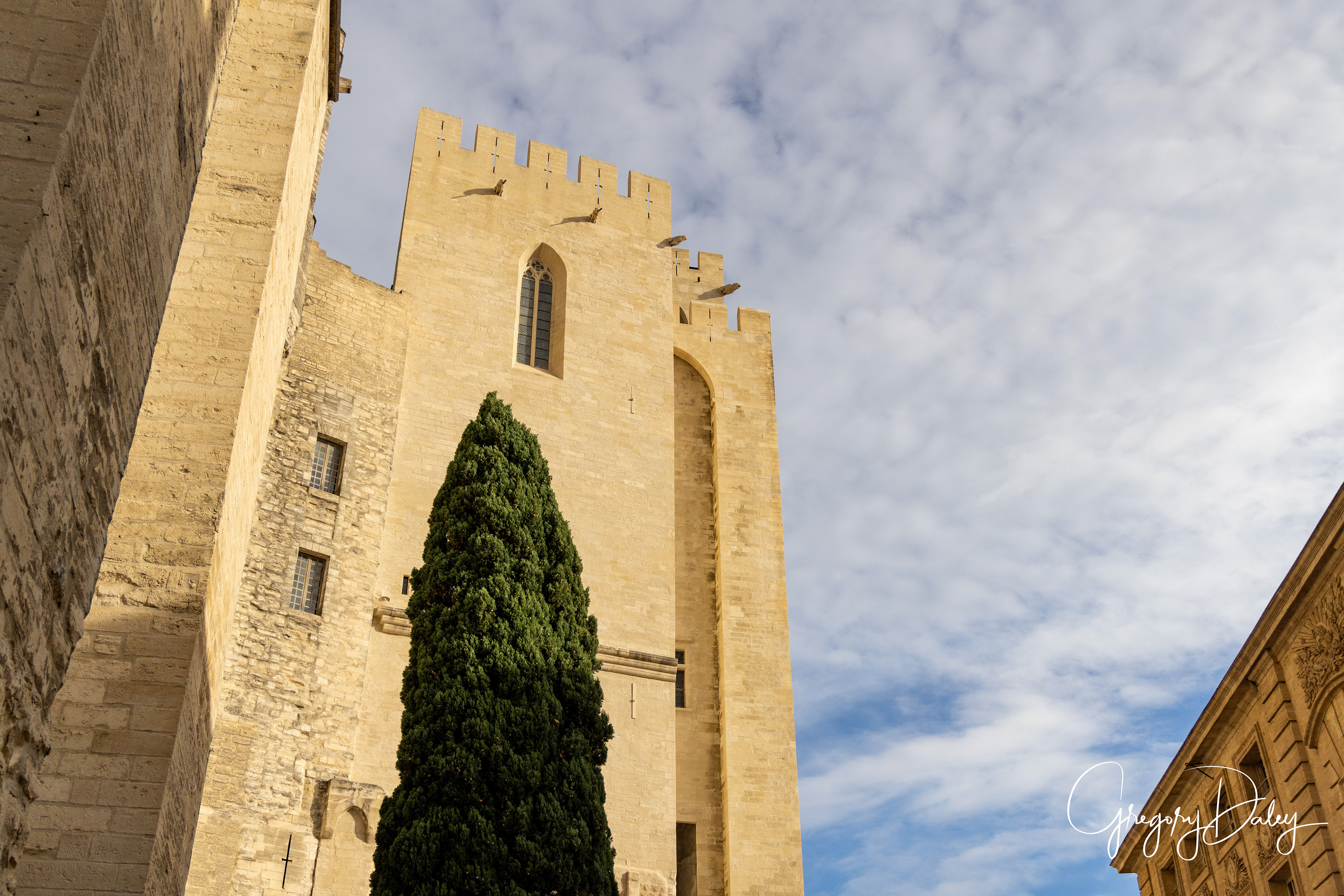
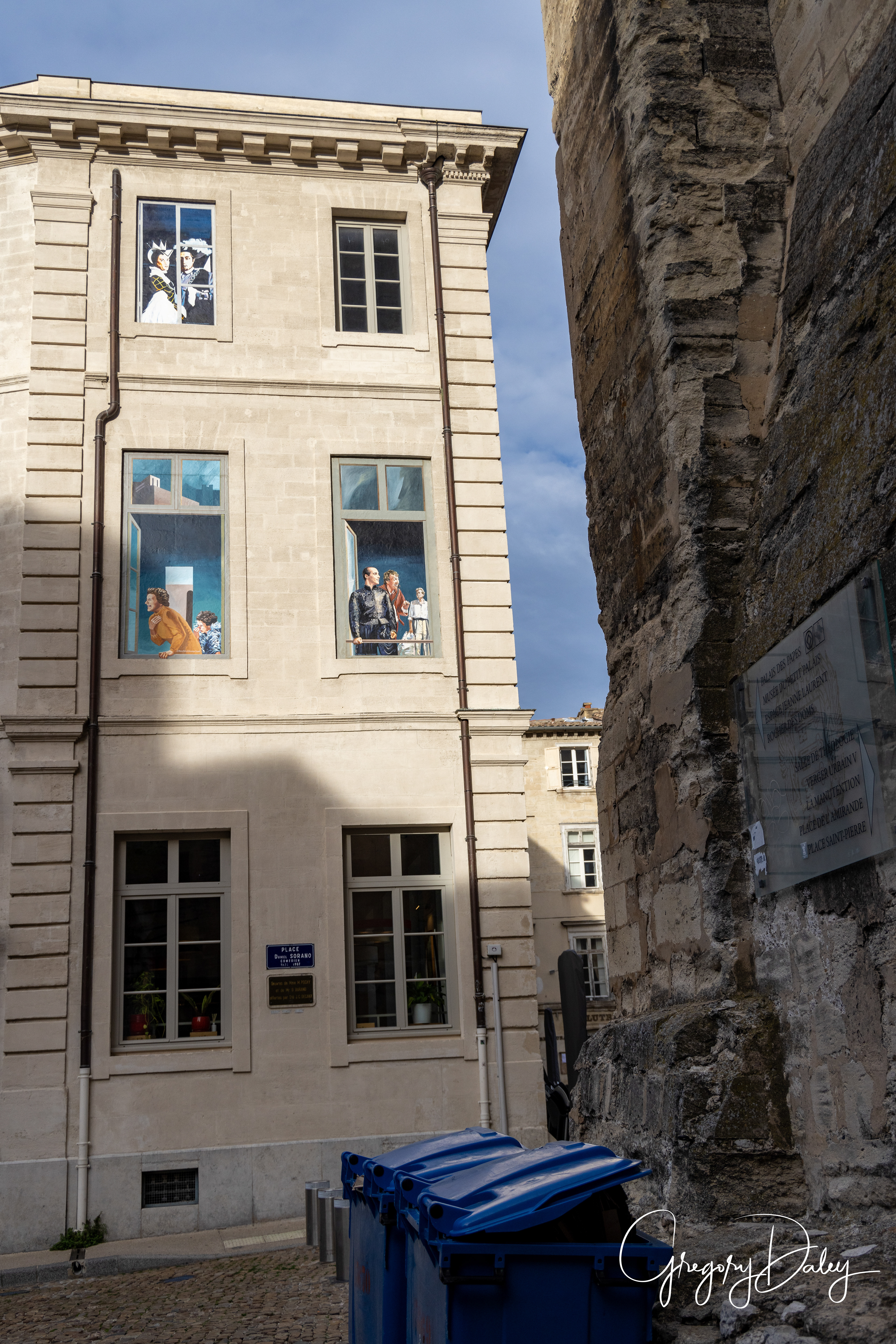
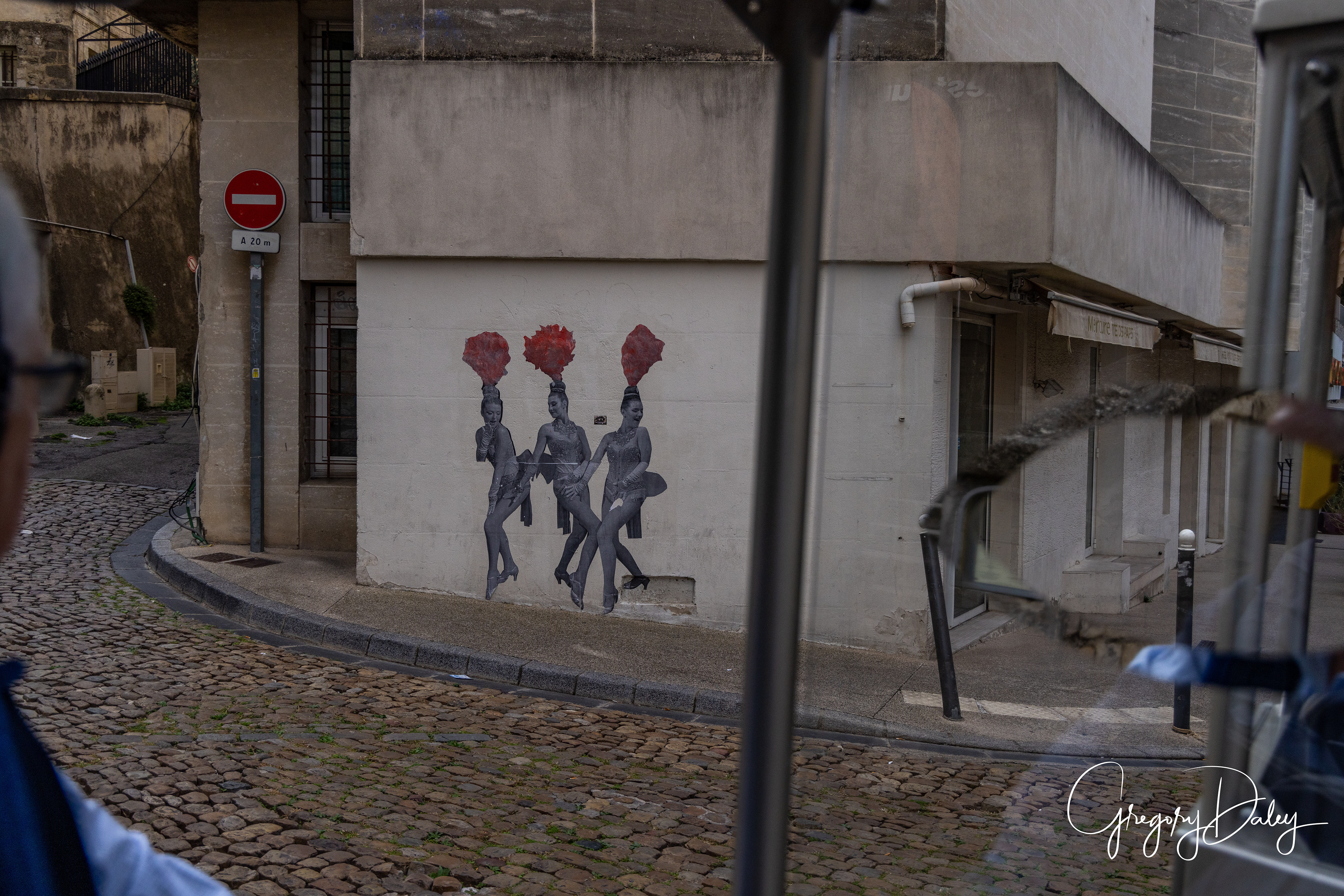
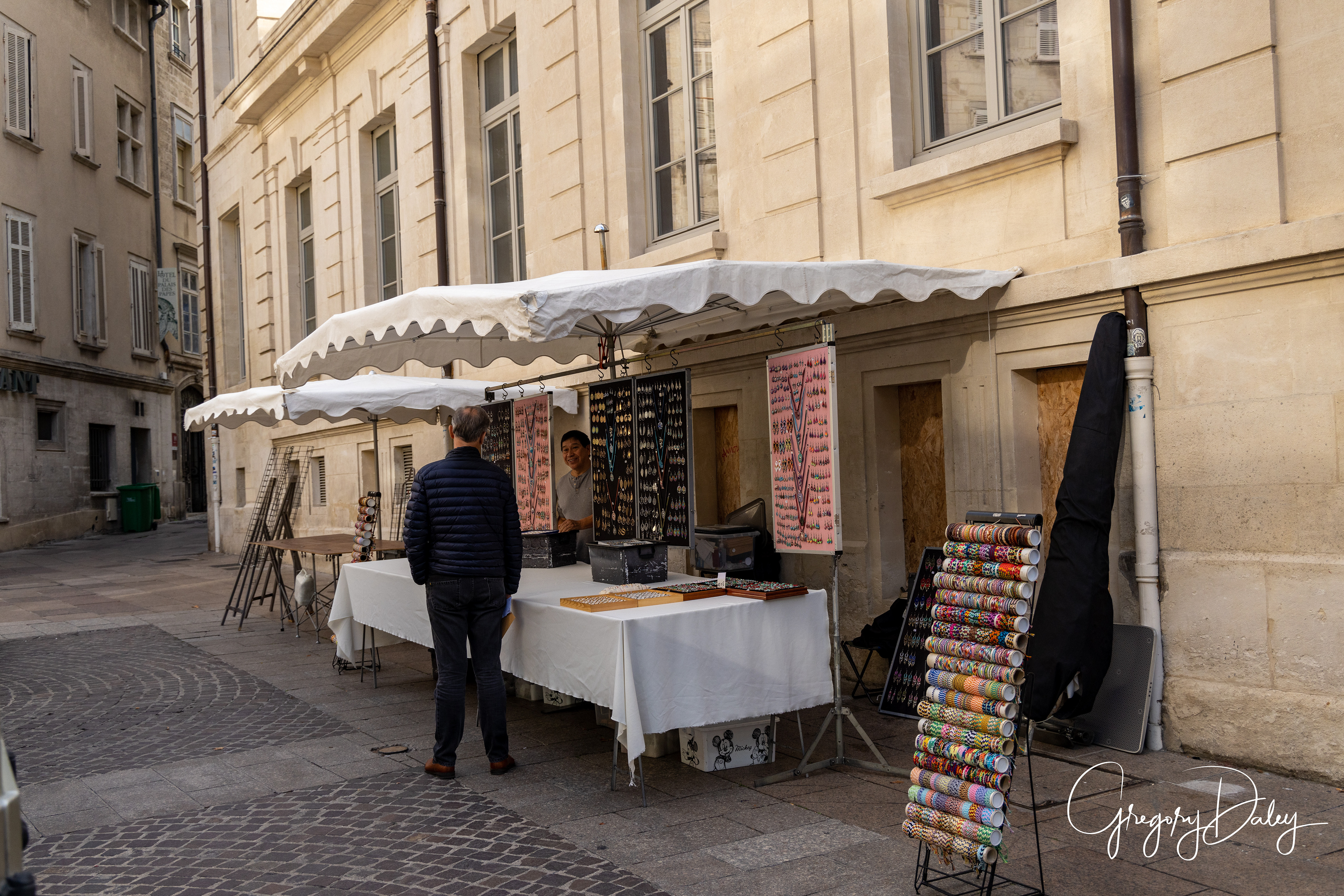
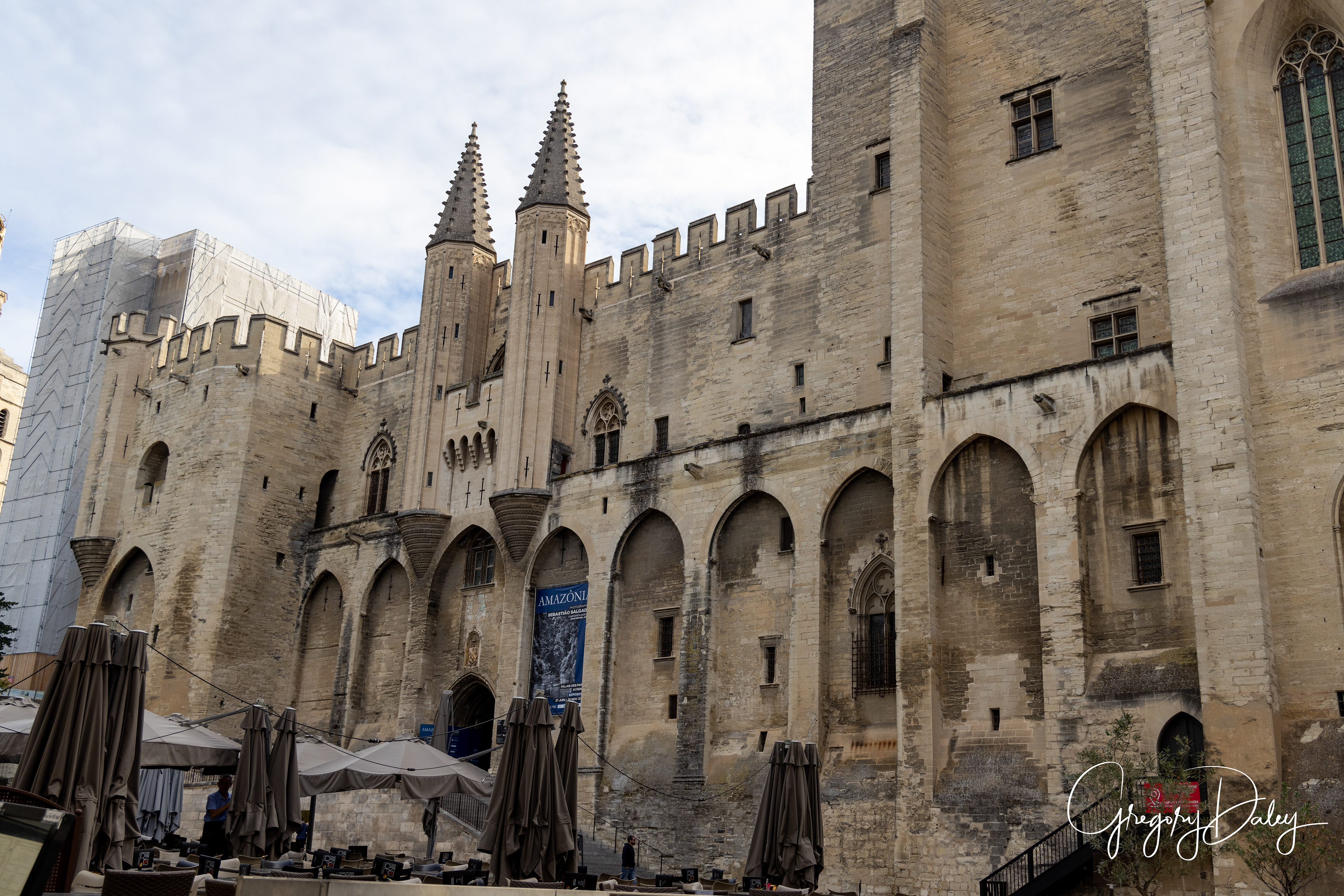


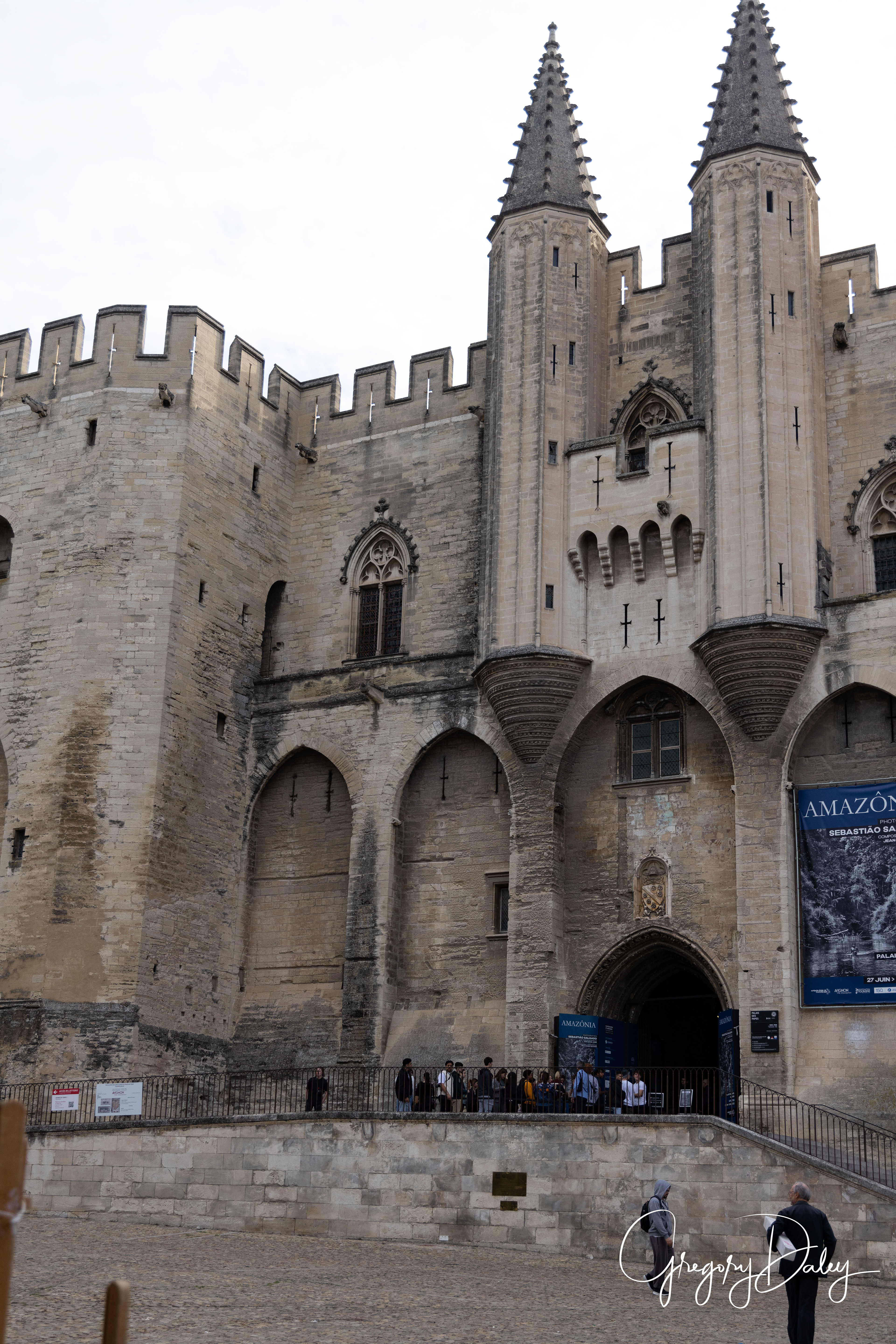
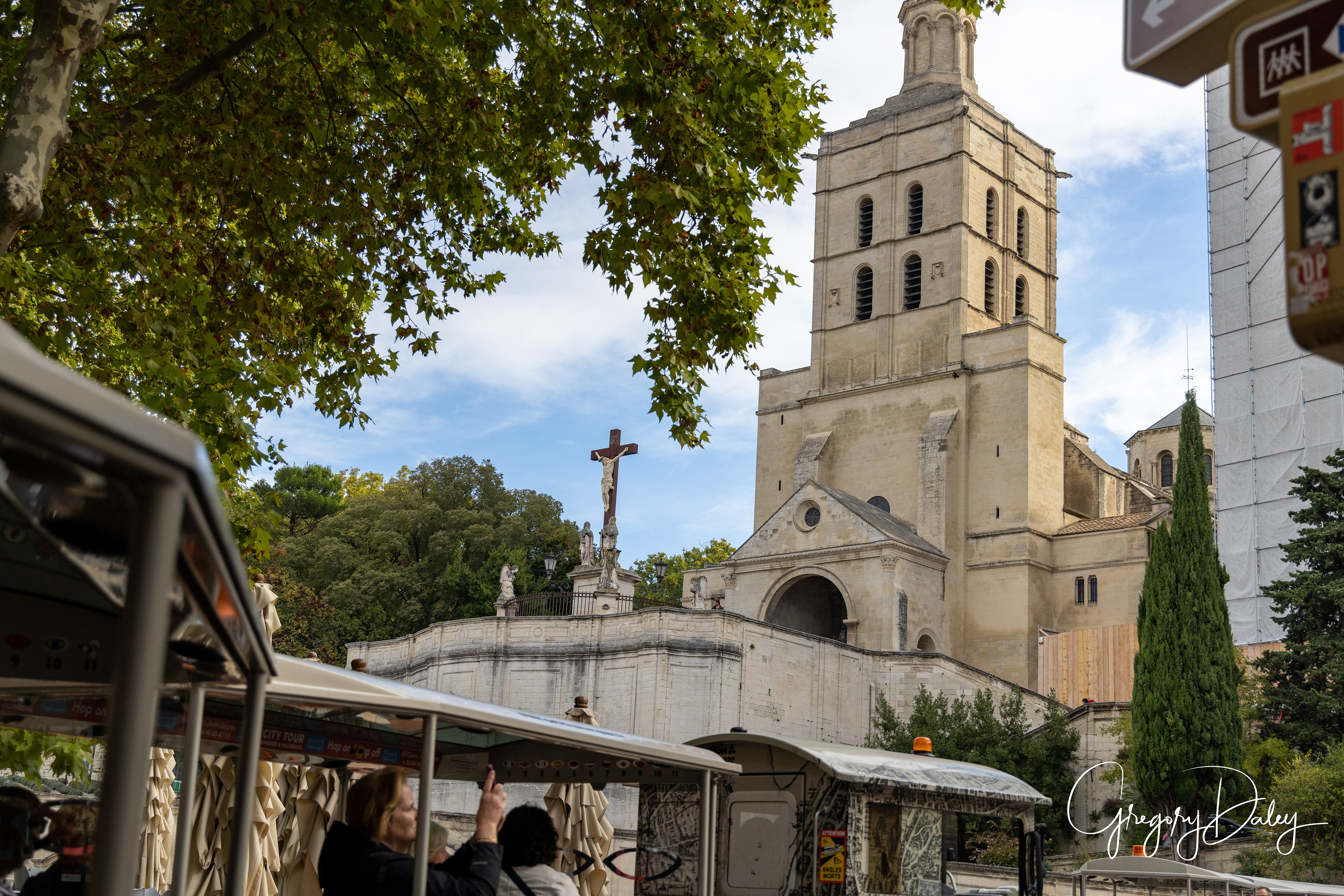


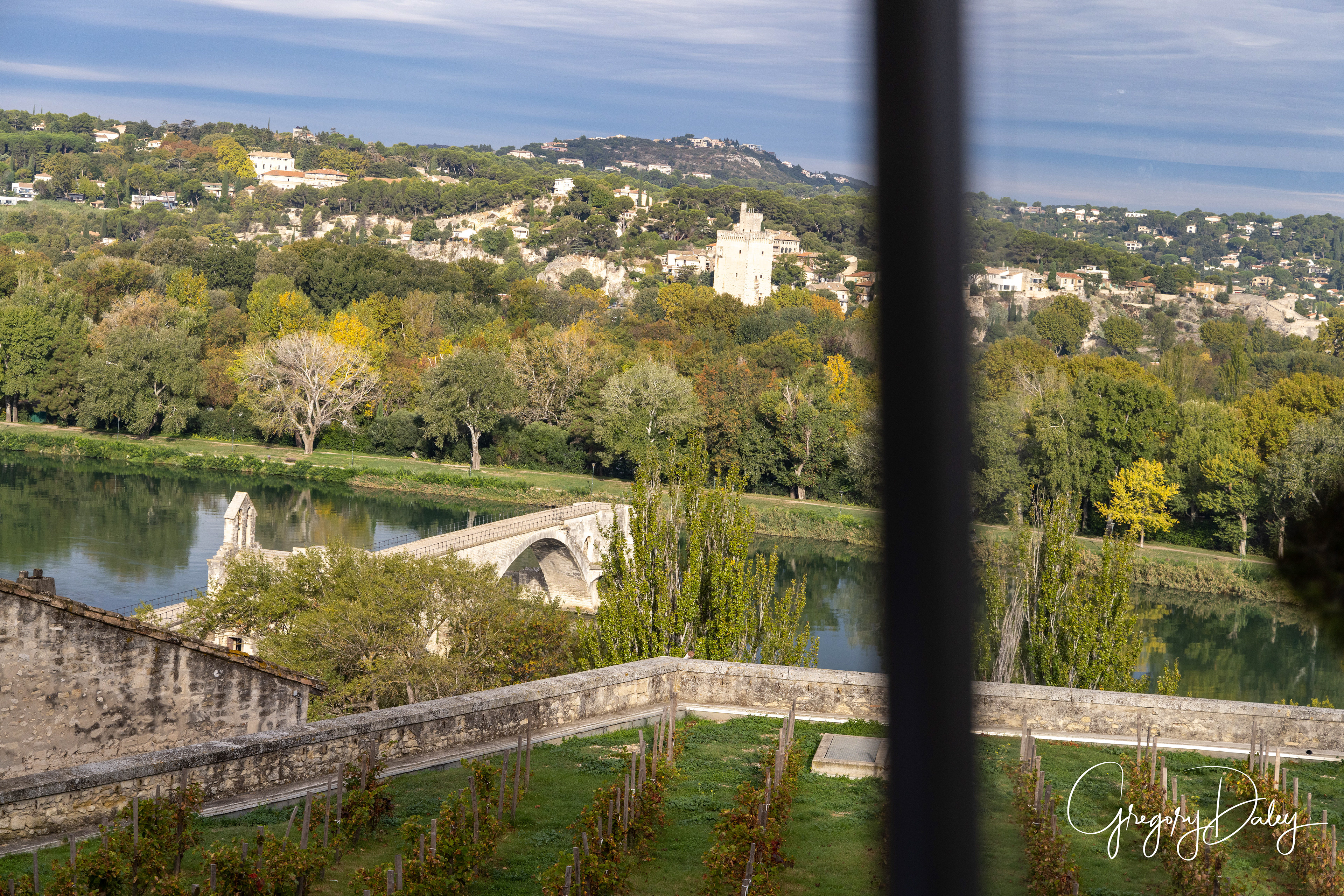
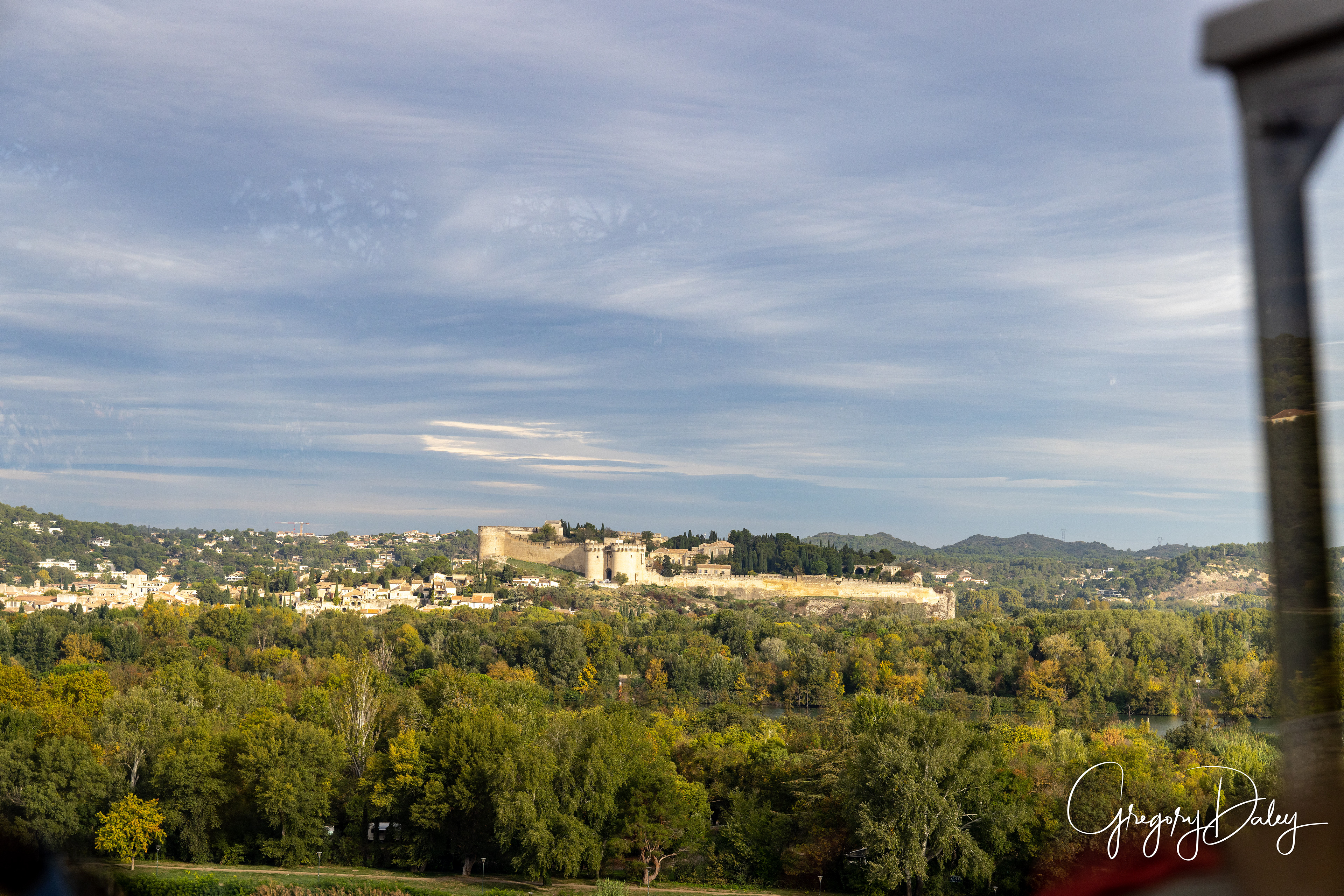

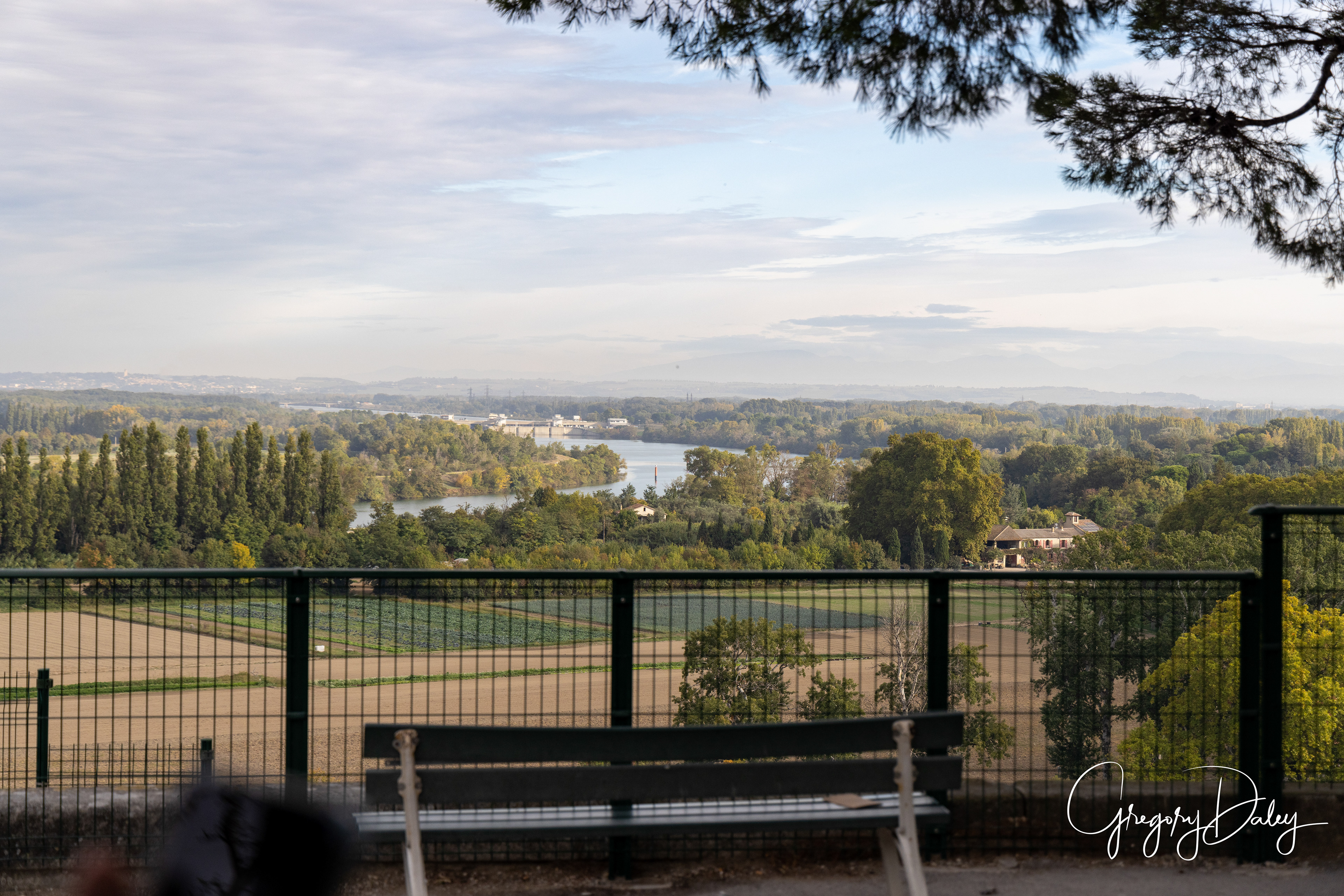
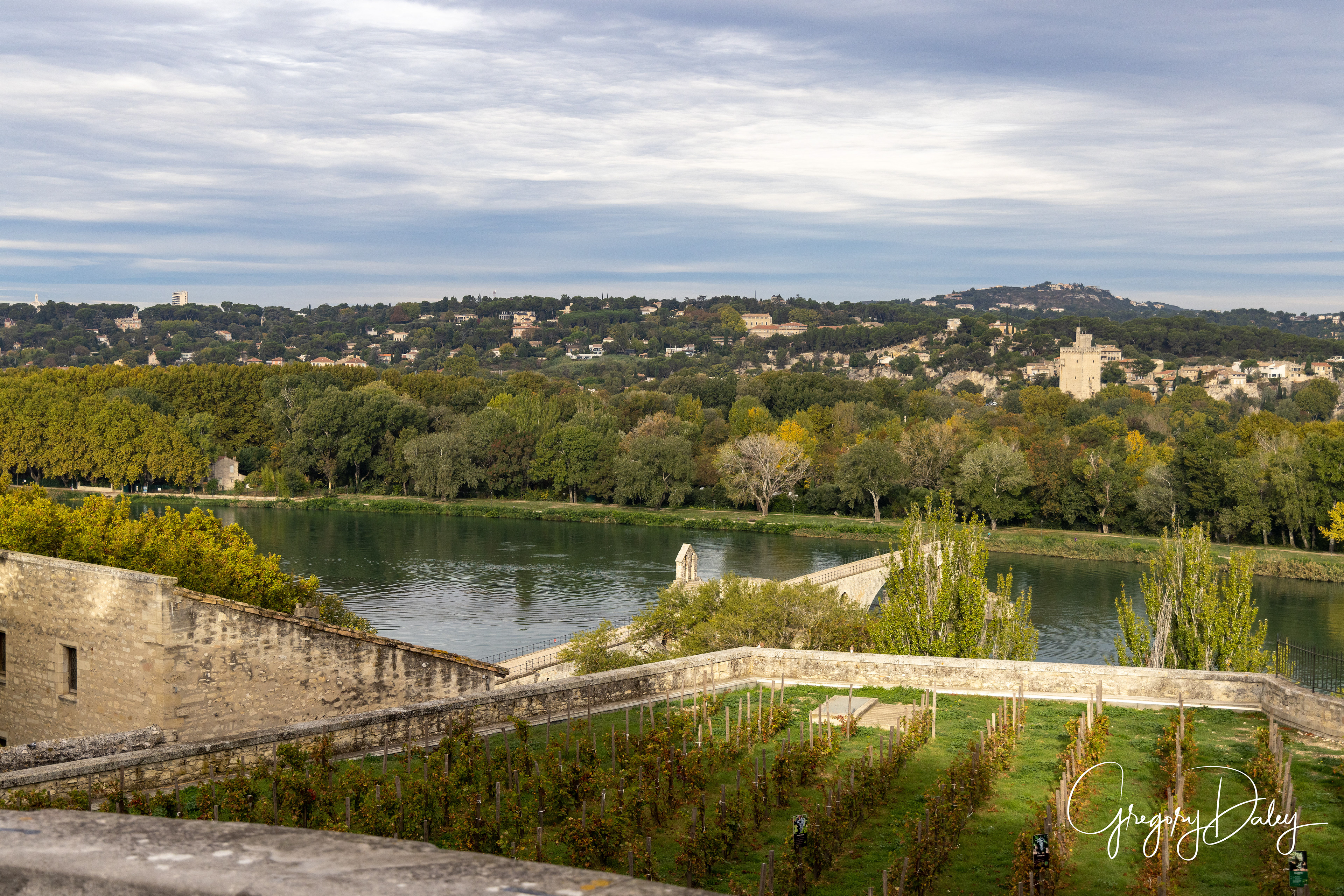


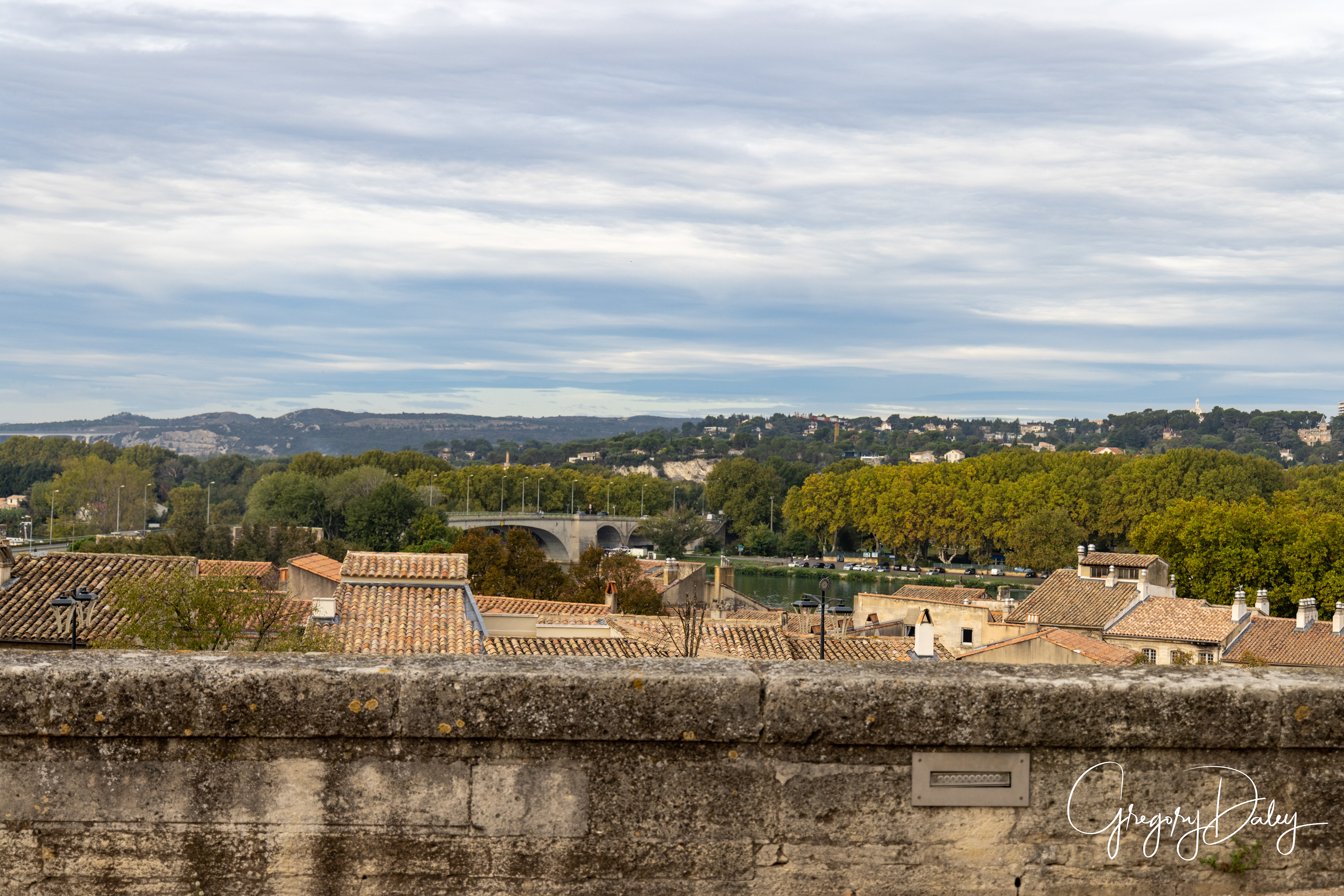
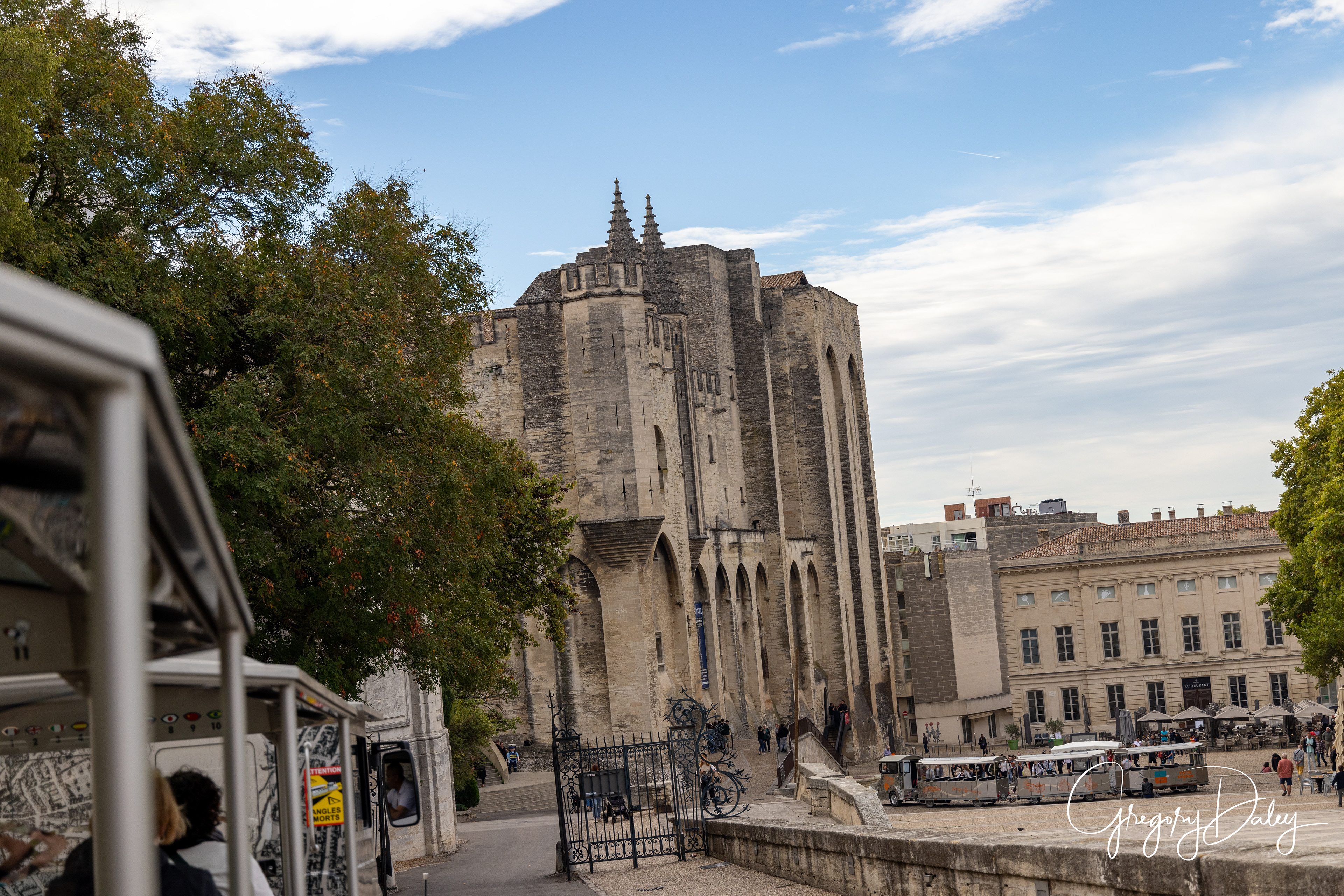
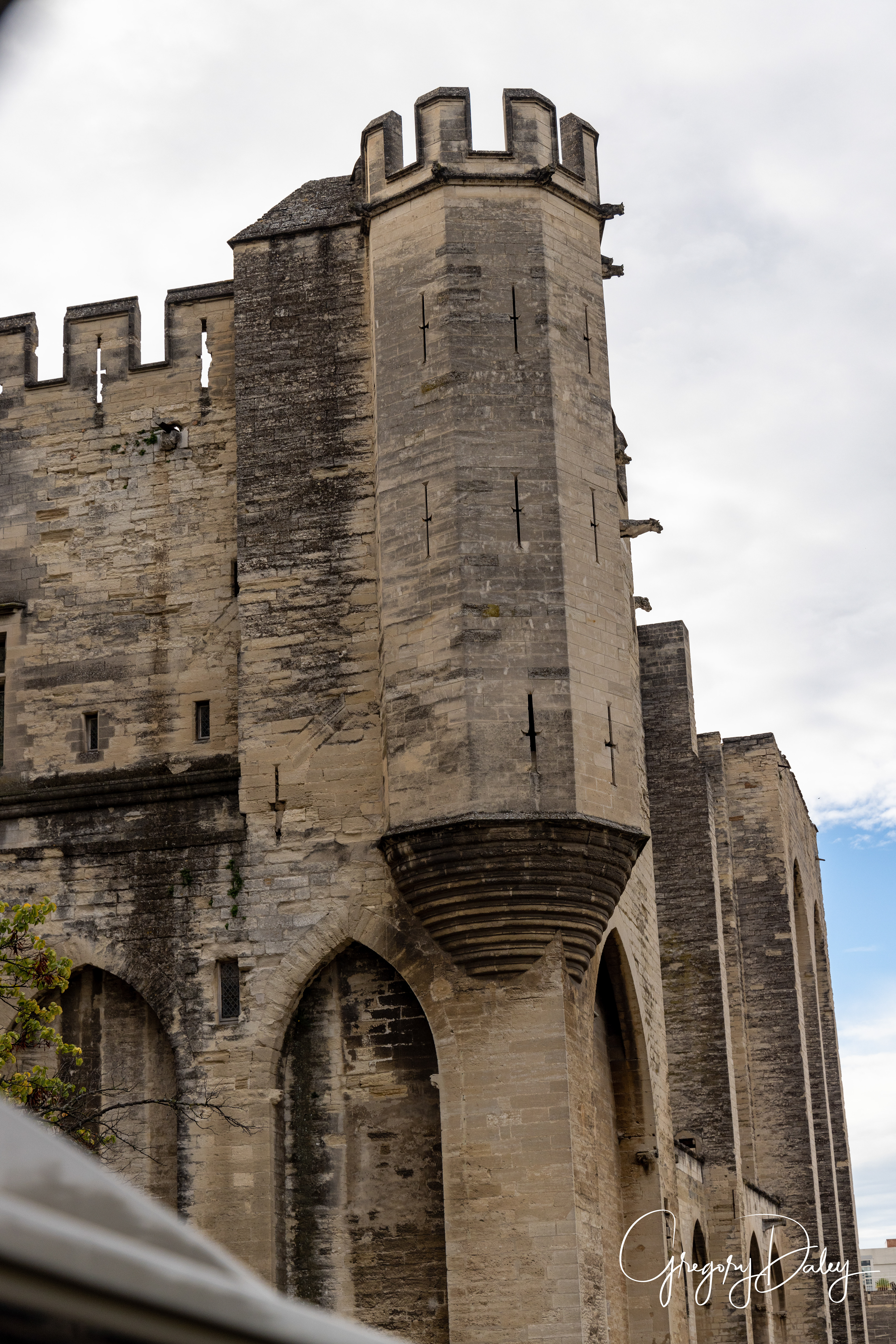
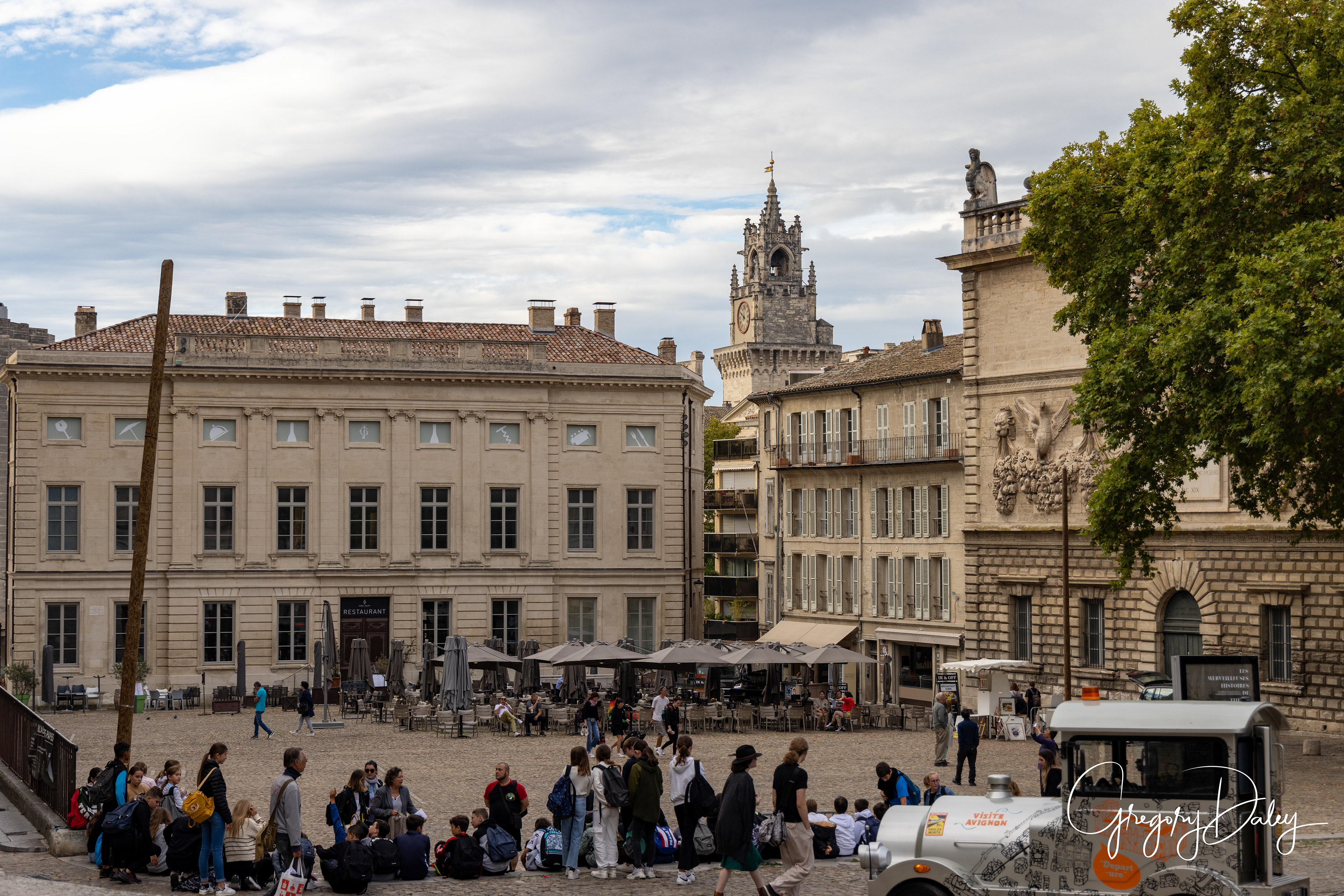
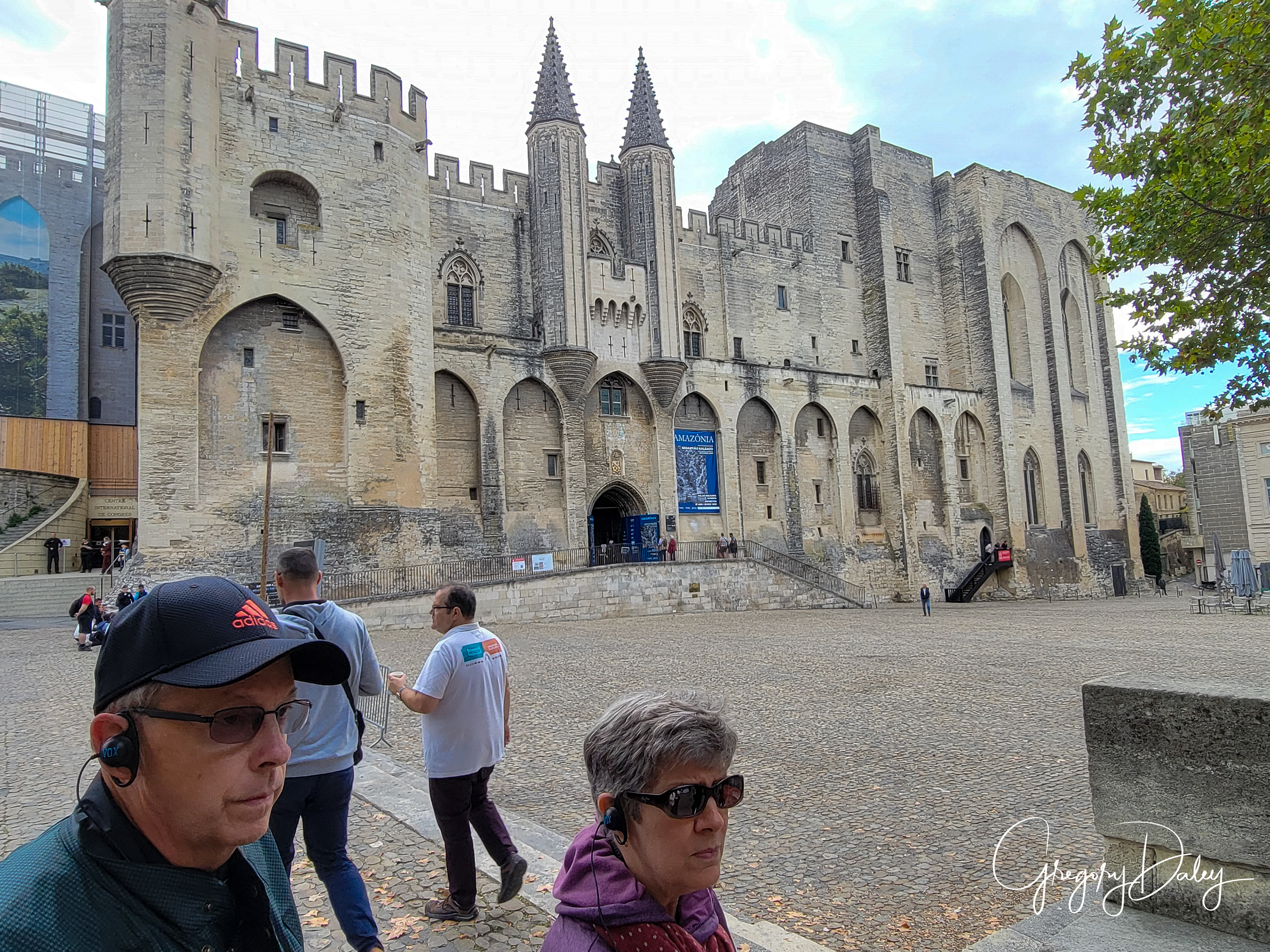
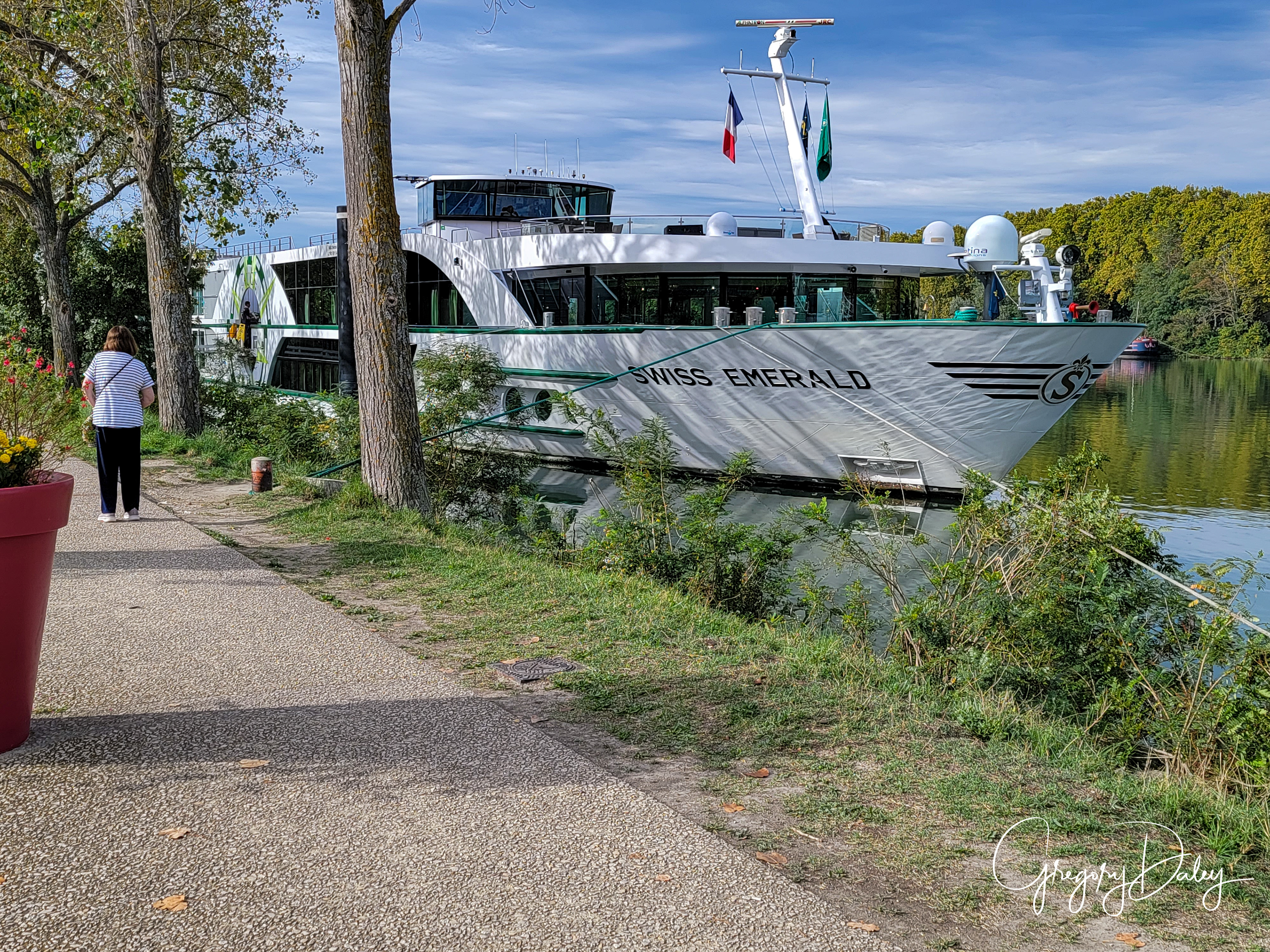

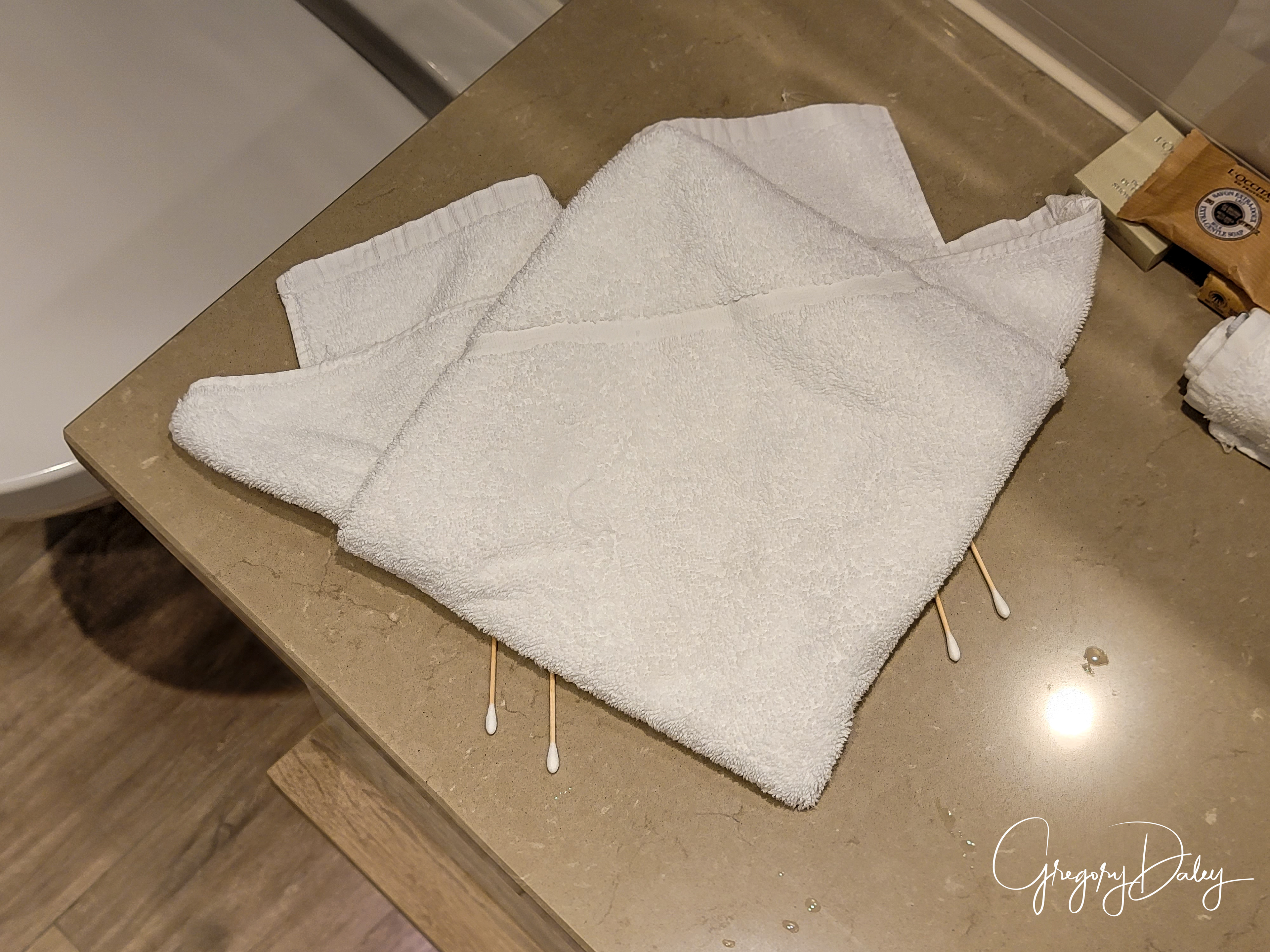
10/14, Day 5 of tour A tourist train rode us through the most interesting parts of Avignon. We saw the old double walls of the city. We saw the pope's Palace where 7seven pope's lived for 70 years. There were still popes in the Vatican. The church was split. We saw many elegant old theaters churches and city halls. We saw a very old Jesuit seminary. Returned to the ship and found Little Kali hiding behind a pillow and a delta wing fighter plane armed with Q-tip missiles. Mariya Primova, my stewardess, is the best. During the trip we did see a delta wing fighter flying low in two different cities. I would guess this was part of some sort of NATO exercise. Avignon is the prefecture of the Vaucluse department in the Provence-Alpes-Côte d'Azur region of Southeastern France. Located on the left bank of the river Rhône, the commune had a population of 93,671 as of the census results of 2017, with about 16,000 living in the ancient town centre enclosed by its medieval walls. It is France's 35th largest metropolitan area according to INSEE with 336,135 inhabitants (2019), and France's 13th largest urban unit with 458,828 inhabitants (2019). Its urban area was the fastest-growing in France from 1999 until 2010 with an increase of 76% of its population and an area increase of 136%. The Communauté d'agglomération du Grand Avignon, a cooperation structure of 16 communes, had 192,785 inhabitants in 2018. Between 1309 and 1377, during the Avignon Papacy, seven successive popes resided in Avignon and in 1348 Pope Clement VI bought the town from Joanna I of Naples. Papal control persisted until 1791 when during the French Revolution it became part of France. The city is now the capital of the Vaucluse department and one of the few French cities to have preserved its city walls. The historic centre, which includes the Palais des Papes, the cathedral and the Pont d'Avignon, became a UNESCO World Heritage Site in 1995 because of its architecture and importance during the 14th and 15th centuries. The medieval monuments and the annual Festival d'Avignon (commonly called: "Festival In d'Avignon") and its accompanying Festival Off d'Avignon - one of the world's largest festivals for performing arts, have helped to make the town a major centre for tourism.


















































